










































































































THE LIVE export of dairy heifers, particularly to China, has been a lucrative market for Australian dairy farmers in recent years, offering significant trade opportunities and attractive prices for dairy cattle.
But with Chinese demand for dairy heifers waning as China grapples with an oversupply of domestic raw milk production and trade risks around Australia’s live export policy, the future prospects for the sector are far less certain, according to a new industry report by Rabobank.
In its recently-released report New directions for Oceania live dairy cattle exports in a slower market, the agribusiness banking specialist says bearish farm sector fundamentals in China — a market that is irreplaceable — point to slower trade for the foreseeable future.
Report author, RaboResearch senior dairy analyst Michael Harvey, said from 2013 to 2023, exporting dairy heifers to China as the country moved to build its domestic milk production had provided a lucrative opportunity and income diversification for both Australian and New Zealand dairy farms.
“The recent boom in Chinese import demand and subsequent high prices came on the back of a wide-ranging industry revitalisation strategy implemented by the Chinese Government in 2018. This strategy very successfully fuelled farm expansion and herd building,” Mr Harvey said.
Trade had been cyclical over the past decade, with import volumes peaking in 2022 at 233,00 head for Australia and New Zealand combined. But by 2024, trade volumes had slowed significantly.
“The growth journey of China’s milk supply — a key driver of increased heifer exports — is at a critical juncture. The industry is grappling with an oversupply of raw milk, leading to falling local milk prices and lower farm profitability,” Mr Harvey said.
The Rabobank report said moving forward, a recovery in Chinese heifer demand was possible. However, it would require a combination of improved milk prices, increased farm profitability and further government policy to support farm expansion and herd rebuilding.
“For Australian dairy farm businesses engaged in the live dairy heifer export sector, this era of sluggish trade may require a

reconsideration of breeding programs and strategic goals,” Mr Harvey said.
With China having consistently accounted for more than 80 per cent of all heifer export numbers from Australia and New Zealand, the hunt may well be on for new and emerging market opportunities, the report says.
The Rabobank report said collectively, the South-East Asian markets, including Singapore, Malaysia, Thailand, Indonesia, Vietnam and the Philippines, was a large milk-deficit region, with self-sufficiency rates ranging from one per cent to 50 per cent.
Based on RaboResearch modelling, the combined import deficit totalled more than 10 billion litres of liquid milk equivalent in 2023.
“More recently, there has been a renewed focus on local herd expansion and milk supply growth, through private and public investment, across some South-East Asian economies to specifically address supply chain and milk price risks,” Mr Harvey said.
“This initiative secures a small but steady


flow of live dairy heifer exports into the region.”
The report says reduced demand from China for dairy heifers provides a more attractive opportunity for buyers in South-East Asia, which might lead to an increase in trade moving forward.
However, Mr Harvey said as history showed, the South-East Asian region could not replace China in volume terms, with annual volumes never surpassing 25,000 cows.
Australian policy watch In Australia, the broader policy environment around live exports also provides a cautionary tale about trade risk for the dairy heifer trade, according to the report.
“While there has been no shift in policy on the live exports of dairy cattle, in May 2024, the Federal Government announced that the export of live sheep by sea from Australia will end on May 1, 2028,” Mr Harvey said.
“And this is another consideration those involved in Australia’s dairy sector trade need to take into account.”











AN AWARD-WINNING cheese manufacturer with century-long roots on a rugged Bass Strait island will close after a buyer could not be found.
Owner Saputo Australia on Thursday, September 5, announced King Island Dairy would have one final season before shutting in mid-2025, ending the brand.
The future of the business had been under a cloud for 10 months after Saputo launched a strategic review of the facility.
King Island Dairy operations began in the early 1900s and is one of the biggest employers in the tiny outpost, home to about 1600 people.
Saputo chief operating officer Leanne Cutts said the decision to wind up the business was difficult.
She said “every possible option” had been reviewed but closure was the most viable way to strengthen Saputo’s competitiveness in a changing market.
“As King Island Dairy’s historic roots are deeply embedded in the region, it was hoped the strategic review would identify a potential buyer for the facility,” Ms Cutts said.
“It is a unique brand, with a plant that is nearly 100 years old.
“Our other Tasmanian brands such as Mersey Valley and Tasmanian Heritage are thriving.
“(While) King Island Dairy products hold a nostalgic place in the hearts of Australians, the brand has not maintained its position in today’s ultra-competitive food industry.”
Saputo, which bought King Island Dairy in 2019, says 58 employees will be impacted but “redeployment opportunities” would be identified where possible.
Ms Cutts said Saputo would work with dairy farmers and the island’s broader community.
Tasmanian Premier Jeremy Rockliff said Saputo’s decision was very disappointing.
“We are providing immediate support to the company’s workers, farmers and the wider island community,” he said.
Mr Rockliff said the state government was prepared to work with the company in a further effort to find a new operator.
Melina Morrison, chief executive officer of the Business Council of Co-operatives and Mutuals (BCCM), said this was another sad day for dairy processing in Australia.
“Every time we lose food and beverage processing infrastructure in Australia, we move closer to being net importers of manufactured products even in staples like dairy,” Ms Morrison said.
“Our hope — like the hopes expressed by the dairy farmers and Saputo workers on King




Island — is that another owner can be found.
“Whatever the fate of the cheese factory, it’s timely to think about whether it’s in the longterm interests of Australian farmers and farm communities to have so much processing ownership held offshore.
“When it’s a co-op like Norco or Mountain Milk, the business decisions are made close to home and made in the interests of the farmers who own the value-adding supply chain.”
Saputo describes itself as one of the top 10 dairy processors in the world.
King Island has a unique climate based on its location and provides lush grazing for cows and unusually sweet milk.
– with AAP




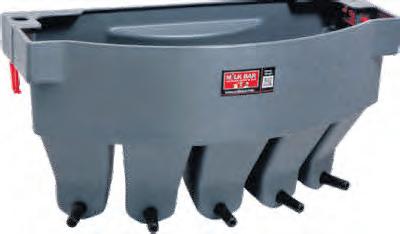














BY GEOFF ADAMS
BEGA CHEESE has recorded a $300 million profit turnaround in its latest annual report.
The food company reported a statutory earnings before interest and taxes of $74 million compared to a loss of $233 million the previous year.
Revenue increased to $3.5 billion and net debt fell to $162 million.
Bega shares lifted to a three-year high on the back of the profit announcement.
The company announced on August 26 that it was selling its Leeton juice extraction facility to Grove Juice for about $11 million. Grove will process fruit juice on behalf of Bega Cheese.
The company noted the intense competition for milk supply in the 2023-24 year.
The annual report stated that farm gate milk prices had been “disconnected” from global commodity prices, but in spring the effect on bulk milk was mitigated by acquiring milk from other dairy companies, particularly during high-volume months, and by manufacturing efficiencies.
Farm gate milk prices were becoming better aligned to global commodity prices likely
leading to better returns from the bulk milk segment, the report said.
Bega purchases more than 1.3 billion litres of milk every year.
The Bega Group has spent $3.3 million in grant supports to dairy farm suppliers to invest in animal welfare, effluent management and water management across 114 projects.
The group announced a final, fully franked dividend of four cents per share for the 2024 financial year, taking total dividends declared for the year to eight cents per share, or $24 million.
The final dividend will be paid on October 3.
Looking to the future, Bega says they expect continued growth in the branded segment and significantly improved performance in the bulk segment as the disconnect between the Australian farm gate milk prices and dairy commodity returns eases.
Bega has started a major upgrade in automation at its national distribution centre in Laverton.
The six non-executive directors were paid a total of $912,000 during the year.
The annual report lists the top 20 shareholders, with the largest shareholder being the Forrest Family, owning about 11 per cent of the issued shares.
Australia’s milk production continues to recover, as global supply is forecast to grow at a modest rate in the coming year, Rabobank says in its latest Global Dairy Quarterly.
In the third quarter report, titled Market Narratives are Shifting, the global agribusiness bank says positive – though modest – milk supply growth is expected from the world’s major dairy-exporting regions through the remainder of 2024 and in 2025.
Meanwhile, milk production in Australia in the 2023-24 season, which ended in June, was 3.1 per cent higher on the previous year at 8.4 billion litres (an increase of 249 million litres).
However, the bank is expecting Australian production to grow at a lower rate in the 2024-25 season – currently forecast at 1.5 per cent.
RaboResearch senior dairy analyst Michael Harvey said Australian milk supply growth had been widespread, with production expanding in all states and regions,

with the exception of western Victoria (where dry conditions have constrained production).
NSW had “led the charge”, recording impressive growth of 5.3 per cent in milk production for the 2023-24 season.
“Seasonal conditions remain mixed though across the key dairying regions,” Mr Harvey said.
“There have been severe rainfall deficiencies so far in 2024 for western Victoria

and South Australia, which are sizeable milk production regions.
“However, seasonal conditions elsewhere have been mostly favourable.”
The global dairy market remains “balanced, but sensitive to change”, the report said.
And the next year could see significant shifts as production increases and markets adjust.
Mr Harvey said milk production from the main global export regions had been elusive over recent years.
“Since the second half of 2021, combined milk production from the Big-7 dairy export regions – the EU, the US, New Zealand, Australia, Brazil, Argentina and Uruguay –has only grown in three quarters,” he said.
However, high dairy prices in the first half of 2024, plus lower feed costs, have improved farmer margins, encouraging production.
RaboResearch expects milk supply from the major exporting regions to increase a modest 0.14 per cent in 2024 on the




previous year.
“With producers seeing improved margins though, milk supply could make a distinct shift upward in 2025,” Mr Harvey said.
“Our initial forecasts for 2025 suggest a 0.65 per cent year-on-year production lift from the Big 7, bringing global milk supply from these regions above the five-year average.”
The report said demand for dairy remained mixed across regions.
“At a retail level, price deflation continues to occur within supermarket aisles in South America, the US and in most of the EU,” Mr Harvey said.
“In response to weak consumer spending in food service channels, companies are spending more on promotions and advertising as consumers ‘pinch pennies’.”
Both demand for and production of milk are expected to decline in China, the world’s largest dairy importer.
Mr Harvey said RaboResearch had revised down its estimates for Chinese dairy consumption for 2024.












AUSTRALIAN DAIRY processors are cementing their sustainability credentials with new data showing a 37.8 per cent reduction in absolute greenhouse gas emissions since 2010-11.
Australian Dairy Products Federation has released a publication documenting dairy processors sustainability achievements against the dairy manufacturers’ environmental performance scorecard, along with stories of innovation and success.
“For Australian dairy processors, sustainability is more than a requirement, it’s a commitment to ensuring the Australian dairy industry continues to be one of the best in the world,” ADPF chief executive officer Janine Waller said.
“We know our sustainability credentials are key to achieving our goal of a strong, vibrant Australian dairy industry and to keep dairy manufacturing local.”
For more than 10 years, the industry has operated under the leadership of the Australian Dairy Industry Council’s Australian Dairy Sustainability Framework, with a sustainability promise ‘to provide nutritious food for a healthier world’.
Australian dairy processors are tracking, measuring and reporting on emissions reductions, sustainable packaging, waste reductions, human rights and more.
In 2022-23, dairy processors generated on average 125.5t CO 2 e of greenhouse gas per millilitre of raw milk processed — another year-on-year cut in emission intensity.
This reduction equates to a 10.4 per cent drop in emissions intensity versus the 2015-16 baseline year.
Compared to the original baseline of 201011, this represents a significant 29.8 per cent reduction in emission intensity, equating to an overall reduction in absolute emissions of 37.8 per cent.
The publication Australian dairy processors commitment to a sustainable future features case studies contributing to the whole dairy industry meeting its sustainability targets
In an Australian first for the dairy industry, Australian Consolidated Milk in Girgarre is utilising an anaerobic digestion system to convert whey permeate, a by-product of the cheese-making process, into biogas — a clean and sustainable energy that will eventually power their whole plant.
“In an era where environmental responsibility is paramount, this innovative upgrade at our Girgarre facility represents a significant step forward in ACM’s commitment to sustainability,” ACM chief executive officer Jason Limbrick said.
“We are not only reducing our carbon footprint but also setting a new standard in the dairy industry. This system will allow us to generate 80 per cent of our electricity and 50 per cent of our natural gas needs on-site, significantly reducing emissions.
“It's a tangible demonstration of how progressive technology can deliver meaningful

environmental benefits while supporting our ongoing production and contributing positively to the local community.”
The Bega Group has developed the Bega Circular Valley 2030 program, which is a transformative regional development initiative with a vision to establish the Bega Valley as the most circular regional economy by 2030.
“The Bega Circular Valley 2030 program is more than just a vision, it’s a bold step towards redefining how regional economies can thrive sustainably,” Bega Group executive chairman Barry Irvin said.
“By embracing the principles of a circular economy — eliminating waste, circulating products and regenerating natural and social systems — we’re not only protecting our environment but also strengthening the resilience of our community.
“Through innovative projects like the National Circularity Centre and our decarbonisation partnership with local farmers, we are laying the groundwork for a future where economic growth and environmental stewardship go hand in hand.”
Advertising Max Hyde 0408 558 938 max.hyde@dairynewsaustralia.com.au
Editor
5820
Ms Waller said Australian dairy processors were improving operating efficiencies, transitioning to renewable energy, turning waste into energy (bioenergy), decarbonising fleets and optimising transport activity.
“Our processors are committed towards achieving a whole of industry target of 30 per cent reduction in GHG emission intensity by 2030 (from a 2015-16 baseline) and they are making great inroads,” Ms Waller said.
She said, to provide some perspective, the annual reduction in GHG emissions processors had achieved since 2010-11 levels was equivalent to removing almost 135,000 cars from the roads each year. To offset this amount of CO 2 emissions, about 28 million trees would need to grow for one year.
“We look forward to sharing further progress against the Australian Dairy Industry Sustainability Framework as we continue to build our credentials as a recognised leader and product of choice in sustainability and climate action,” she said.
ɋ Read the ADPF publication at adpf.org.au

Dairy News Australia welcomes contributions from stakeholders in the dairy industry, and particularly from organisations wishing to advance the industry.
Contributions and photos can be sent to: editor@dairynewsaustralia.com.au
Letters to the editor on topical issues are also welcome.
Letters should be concise and carry the name and town address of the author, as well as a contact phone number, not for publication.

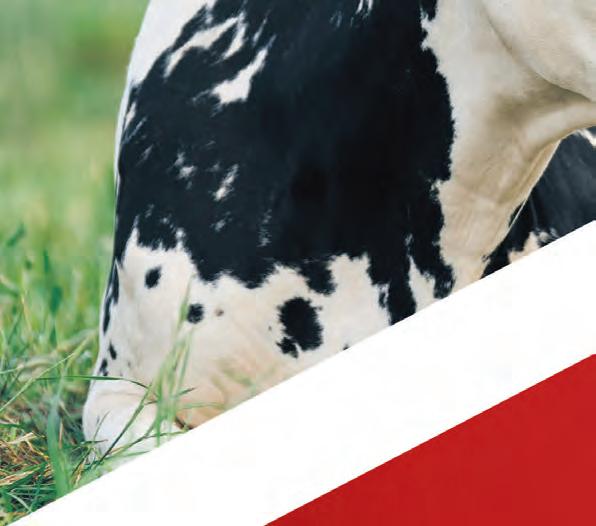

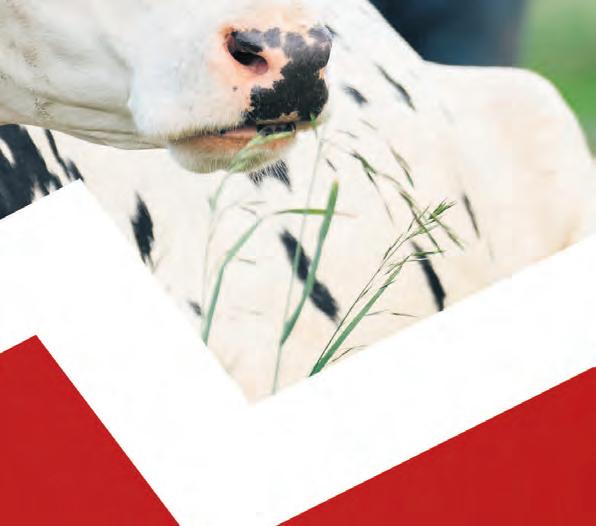








CowManager ear sensors measure ear temperature combined with behaviour, resulting in more accurate and earlier alerts. Never miss a heat, identify at-risk cows in the dry period and catch diseases before a cow even shows clinical signs.
Stay ahead of the herd with CowManager. Visit www.cowmanager.com/australia



WEST GIPPSLAND Catchment
Management Authority, in partnership with Agriculture Victoria, is excited to share the results of the Sustainable Irrigation Program
Demonstration Trials, a two-year project aimed at showcasing the benefits of irrigation technology using real-life examples from farms.
Across the project, dairy farmers in central Gippsland successfully trialled new technologies that demonstrate savings of time, money, water and nutrients while protecting the environment.
“The CMA has been working with farmers for over 25 years, helping to save water and keep nutrients on farm and out of the waterways, including the Gippsland Lakes,” West Gippsland CMA sustainable agriculture project officer Bonnie Dawson said.
“This latest project is another example of the CMA, Agriculture Victoria and farmers working together on innovation in sustainable irrigation techniques that benefit agriculture, the community and the environment.”
Four irrigators in the Macalister Irrigation District received grant funding to host demonstration sites on their farms.
Two focused on best practice management of dairy effluent, with the remaining two focusing on technologies to increase water use efficiency and reduce energy emissions.
“The aim of the demonstration sites was to trial technology and showcase the results with the broader irrigator community through knowledge sharing and field days,” Bonnie said.
“In doing this, we hope to encourage and support more farmers wanting to adopt similar techniques on their farms.”
Newry dairy farmer James Clyne trialled technology that enabled him to customise a pivot irrigation system to better suit the varying terrain and soil profiles of his 300-hectare property.
He’s now seeing positive results of less water wastage and an increase in pasture production.
“We’ve noticed an increase in water use efficiency by 20 per cent,” James said. “I would recommend this technology to anyone with a pivot. There are always areas (on farm) getting underwatered or overwatered and this technology just instantly helps with that.”
In Clydebank, organic dairy farmers Wilco Droppert and Sandra Jefford trialled software that could automate their sprinklers according to the amount of solar power available, saving hours of manual labour and maximising their
water efficiency and solar energy use.
“Production of pasture has probably increased by at least 25 per cent and the labour saving is just phenomenal.
“It’s also enabled us to integrate trees into the irrigation system which was not possible before,” Wilco said.
Tinamba dairy farmer Tom Gannon trialled a self-cleaning filter on his pivot irrigator to prevent disruptive and time-consuming blockages in the system when applying effluent.
“In the six months we’ve had the system, I haven’t had to manually clean the filter or clean out the sprinkler heads on the pivot. This technology is doing the job, so we’re happy,” Tom said.
After modernising their irrigation infrastructure with an automated effluent distribution system, Jess and Steven Knight used the grant funding to measure the impact the system was having on soil health so they could make better decisions about where and when to apply effluent.
“Being able to distribute effluent on farm in a way that meant it wasn’t going back into the lakes and waterways was really important to us,” Jess said.
All four demonstration trials were completed in mid-2024 with outcomes and learnings now available to the farming community through a series of videos available on the CMA website and through upcoming field days run in partnership with Agriculture Victoria.
“We encourage all irrigators to watch the videos or come along to one of the farm walk events to see the technology in action, speak to the farmers about their experiences, and chat to us about adopting the technology on their farms,” Bonnie said.
“Together we can continue to reduce the environmental impacts of irrigation from the farm itself, all the way down to the Gippsland Lakes,” Agriculture Victoria senior irrigation extension officer Alexis Killoran said.
This program is funded through the Victorian Government’s Sustainable Irrigation Program.
Farm walk events:
Effluent filtration and utilisation at Tinamba on Tuesday, September 17.
Solar power automated fixed sprays at Clydebank on Wednesday, October 2.
Optimising soil moisture using Variable Rate Irrigation at Newry on Thursday, November 14.
Events are free. To register, visit www. wgcma.vic.gov.au






Caring for your crop at key times will help maximise yields and ensure your livestock get the most from the Forage brassica crops. Exirel® uses clever chemistry to protect forage brassicas from destructive pests like Cabbage white butterfly, Centre grub, Diamondback moth, Native budworm, Soybean looper and Grey cabbage aphid. It’s also gentle on key beneficial insects. Visitag.fmc.com/au for more information.


















































PROVEN * trace mineral injection for cattle to support optimal health, production and fertility, with the added benefit of Vitamin B 12 in one convenient injection

















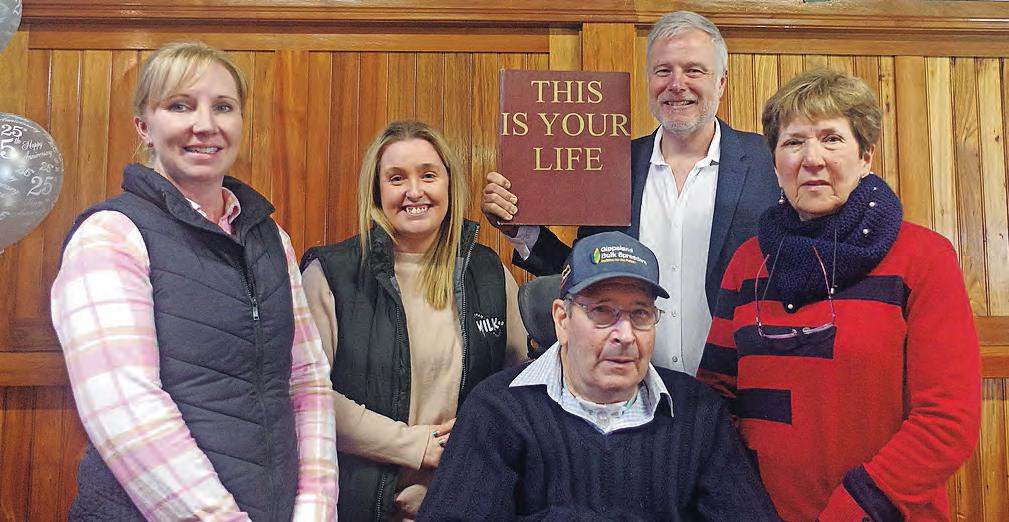

BY JEANETTE SEVERS
RESILIENCE WAS the topic for discussion at the farmer panel at this year’s South Gippsland Dairy Expo.
Resilience, in the best interpretations, is the ability of people to respond to stressful and unexpected situations and crises, and be able to adapt to change.
Matt Harms, from OnFarm Consulting, facilitated a discussion where two farmers, Colin Gray and Ancret Shipton, talked about the challenges they have had to deal with, and how each has adjusted to their new life.
The farmer panel is an institution of the dairy expo, and draws a considerable crowd every year.
It was established by farm consultant John Mulvaney. Matt Harms has been facilitating it for the past 12 years, including an online farmer panel during the pandemic.
This year’s theme was an adaptation of ‘This Is Your Life’, and Matt posed questions to the panel guests, which included podcaster, Chloe Brown, who is also a co-founder of the Cream of the Crop conference.
Colin and Jenny Gray were dairy farming at Nilma, Vic, and had started discussing transitioning to retirement. The couple had employed a sharefarmer.
Then Colin fell off a tractor and broke his neck.
“I was 62 years old, Jenny wanted me to retire, and we’d bought a new car and caravan,” he said.
Dairy farming had been Colin’s focus since he left school at 17 years old and started working full time on the family farm.
He was also active in the local CFA and woodworking club and participated in on farm discussion groups.
The accident in 2011 saw him in hospital for four months, then a rehabilitation centre for eight months.
He was in a coma for his first week at the Alfred Hospital (Melbourne), and a lot of the following year was spent intubated because of ongoing respiratory diseases.
“I was away from home for 16 months,” he said.
“I didn’t get out of bed for nine weeks, and I kept going back into ICU.
“The first four months after the accident were the worst of my life.”
Ancret and Michael Shipton met when she was 16 and he was 18. Michael was from a dairy farm at Verona, NSW, in the Bega Valley.
The couple worked on dairy farms in NSW and Victoria, and were able to build herd equity at each farm.
In 2014, Michael and Ancret returned to the Bega Valley, buying their own irrigated dairy farm at Kanoona.
“With a young family, it was important for us to return to the Bega Valley and be supported by both our families,” Ancret said.
They bought the original Kanoona dairy farm and Michael began building the business, passionate about achieving excellence in the dairy industry.
Losing 70 cows to facial eczema in 2016 and the east coast drought did not deter him.
In the immediate aftermath of the bushfire that came down Brown Mountain on December 30 and 31, 2019, Dairy News Australia interviewed Michael Shipton. He was busy donating a shed load of hay to other dairy farmers.
He organised an electrician mate to accompany him with a generator to farmers in his district, so their herds could be milked.
That was the type of farmer and neighbour he was.
In the middle of 2020, with the dairy farm still in a building phase, Michael Shipton complained about sore legs.
“I convinced him to see a doctor. Everything changed after that,” Ancret told the audience at the dairy expo.
Michael had stage four cancer, originating in his stomach, and the soreness in his legs was caused by blood clots. Any one of those clots could cause his immediate death.
“The blood clots in his legs needed managing, and he needed chemotherapy treatment,” Ancret said.
“Michael was unable to keep milking.
“He passed away within nine-and-a-half weeks.”
In that short time, Michael had received two rounds of chemotherapy and, Ancret said, much of the time he was unable to communicate effectively.
Ancret was working as a librarian and the primary carer for their children, who were 15, 13 and nine years old when Michael was diagnosed with cancer.
She had minimal involvement in the farm.
“About five weeks into the diagnosis, I realised I needed to find out from Michael how to run the farm,” Ancret said.
“I needed to know what to do for joining, how much fodder we had to make – or buy –there was so much I needed to know that was in his head.”
She was committed to keeping the farm operating, for the future of their children.

So Ancret started asking questions of Michael and writing down everything he told her.
“The dairy industry in the Bega Valley is very supportive, and I got a lot of help for the day to day activities,” she said.
There was a day in hospital when Ancret asked Michael about fodder, and he could only hold up fingers to communicate. Ancret and their agronomist, who was also in the hospital room, were able to work out what Michael meant – how much hay, silage and grain was needed for the 350-head milking herd.
But in the 18 months aftermath of Michael’s death, Ancret needed help to make sense of the copious notes she had written.
“My brain struggled to cope with Michael’s death and understand what needed to be done next,” she said.
Following the farmer panel, in an interview with Dairy News Australia, Ancret revealed her personal life was compounded since Michael’s death.
Beyond the legal and financial burden created by a lack of life insurance and will, other unexpected stresses occurred.
Twelve months after Michael died, his brother Will was also diagnosed with cancer. Will was survived by his two daughters. Will’s death was followed only a few weeks later by their father, Bob, passing away.
Then Ancret’s mother, Naomi Lewis, was diagnosed with cancer. Ancret nursed her for 12 months and she passed away in September last year.
“The last few years have changed the way I think and how I see the world,” Ancret told Dairy News Australia
Continued on page 12
Fleckvieh improves fertility, strength, longevity, tness and beef value without sacri cing milk production.
FIND OUT WHY FLECKVIEH IS THE SECOND MOST MILKED BREED IN THE WORLD AND THE MOST USED SEMEN IN THE NETHERLANDS!
Bayern-Genetik-Australia your No1 source for German Fleckvieh
For more information contact George Cassar on 02 6550 7661
Email: karovafleckvieh@gmail.com
Follow us on Facebook: Bayern Genetik Fleckvieh - Australia Web: bayern-genetik.com.au


Evan Campbell, Ben Vagg and Aaron Thomas were walking the beat on behalf of Dairy Farmers Victoria at the South Gippsland Dairy Expo in September.
Evan, Ben and Aaron are young dairy farmers living and working in Gippsland.
They are all also on the committee of DFV.
“We’re on a membership drive at the expo,” Evan said.
“We’re all dairy farmers and we’re all busy on our farms, but we also think it’s important to get out and talk to other
people and find out the issues that worry them.”
Evan said DFV was engaging in the review into the Dairy Sustainability Framework.
“We’re collating information about how the Dairy Sustainability Framework can better meet dairy farmers needs, going into the future,” he said.
“A lot of us on the committee of DFV are in our 30s; and we have other members who are older and have more experience in the advocacy space.
“We’ve been able to make submissions about cattle underpasses, biosecurity, surplus calves.
“We’ve also made submissions to Worksafe Victoria about the changes scoped for telehandlers.”
Dairy Farmers Victoria’s key partners are Dairy Australia, Gardiner Foundation, Agriculture Victoria and Rural Bank.
DFV also partners with GippsDairy, Murray Dairy and WestVic Dairy.
“We work with them on issues relevant to dairy farmers,” Evan said.

Continued from page 10
“It would be good to get that perspective without losing Michael.”
Matt asked Ancret and Colin if they considered selling their respective farms.
Colin said he and Jenny learned the value of family and friends.
“I had a tracheostomy, I was drugged to the eyeballs and had an unrealistic interpretation of what was happening to me,” Colin said.
“I was worried I wasn’t coming home.”
Since the accident in 2011, Colin and Jenny have had agreements with three sharefarmers, that means they have been able to remain involved with the farm.
“If we hadn’t had a share farmer in place at the time of the accident, we probably would have had to stop dairy farming,” Colin said.
“I’ve had to learn to trust that people know what they are doing with the farm.”
Colin worked hard in therapy to regain some use of one of his hands.
He said a big challenge was getting therapists to understand what farm work entailed. Colin was determined to return to farming, and wanted them to modify his rehabilitation exercises to support that ambition.
“The first three years were the hardest,” he said.
“Physiotherapy and hand therapy have helped develop fine motor skills in my right hand. I can feed and shave myself now.
“I can also do my own bookwork on the

do on the farm, but Michael had given her a couple of tenets to guide her.
“Michael’s advice was to focus on feeding cows and rely on the advisors he was using,” she said.
“And he said to hold on to your assets.”
She is now in a phase of developing a new business structure for managing the farm.
“Michael was a great farmer and when he died so much knowledge was lost,” Ancret said.
“I never expected to run the dairy farm and business, and it’s not something you can learn overnight.
“Every day I doubted I knew what I was doing
“I’ve learned not to be so hard on myself.
“Nine weeks changed our future plans.”
Ancret also recommends having life insurance and a will.







AUSTRALIAN FARMERS are being urged to fill their sheds with hay this season as stockpiles run low.
Feed Central recently hosted a webinar called Tips for a Profitable Hay Season, which sought to answer two key questions that are front of mind at this time in the season: is there a market for hay in 2024 and how do I make high-quality hay?
Feed Central’s national sales manager Dave Clothier said stocks were already low and many haysheds were empty, meaning there would be a pressing need for more hay.
Mr Clothier said the answer to whether to make hay this season was already clear.
“There is already a shortage of hay in parts of the country so growing hay this season could offer substantial rewards; there will be a strong market for it now and over the next year because of the current shortages,” he said.
Fifth-generation farmer from near Kerang, in northern Victoria, Col Radcliffe, who has won multiple Feed Central National Hay Quality awards, expects high demand for quality hay.
Mr Radcliffe’s family business covers about 3500 hectares, including 600 on irrigation, with about 50 per cent of the farm’s production dedicated to hay with a focus on irrigated lucerne for the chaff industry, along with vetch and oaten hays.
“We started the season with a full profile of moisture and we’ve got great potential but we need rain very soon,” he said.
“As the days go by without rain, we’re losing that potential every day.”
Mr Radcliffe advised the webinar listeners to act now to cover predicted production shortages.
“From everybody I’ve been talking to, it seems like hay production will be down 30 to 40 per cent,” he said.
“We’ve had a good run of seasons in this area but we know we’re going to cop some adverse conditions.
“I believe there’s going to be more requirement for hay, including for the growing feedlot industry.
“If you’ve got sheds that don’t have hay in them, I’d fill them. If you can put quality hay in the shed, it’s always saleable.”
The Radcliffe family also produces grain but remains dedicated to hay growing, and has some tips for success.
“It comes down to attention to detail,” Mr Radcliffe said.
“Treat it as a hay crop, not just grain growers doing it to fix problems in paddocks.
“We’re dedicated hay growers and give it the attention it deserves right from the previous harvest.
“And make sure you store it in a shed or have it properly covered.”







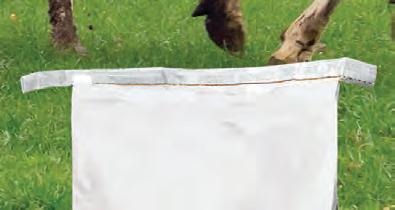



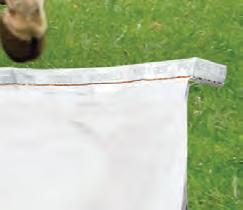



BY JEANETTE SEVERS
AUSTRALIA’S PEAK volunteer organisation for helping farmers is continuing its work despite waiting months for the Federal Government to help it.
In July, Lions Need for Feed volunteers took more than 1000 bales of donated fodder, and other assistance, to King Island.
But the organisation’s request to defray the cost of transport by boat is still waiting for Federal Government assistance.
More than 2000 bales of donated fodder have recently been distributed by Lions Need for Feed to farmers in drought in south-west Victoria and King Island.
The army of volunteers that underpins Lions Need for Feed made their latest expedition to south-east South Australia on September 13 to 15.
But the cost of transporting fodder to King Island in July is still being borne by the voluntary organisation, while it waits to hear from the Federal Government about an application for freight assistance.
Graham Cockerell, coordinator of Lions Need for Feed, said he was still waiting to hear that the cost to transport 500 bales of fodder by boat, was going to be reimbursed to the organisation.
And the lack of guarantees to cover further freight costs could hold up further fodder distributions to Tasmanian farmers in drought.
“A variation has been made to the Tasmanian Freight Equalisation Scheme (TFES) to allow for charities to take supplies to Tasmania, King Island and Flinders Island,” he said.
“Fodder has to go by boat, of course, to get to King Island.”
The Tasmanian Government provided a subsidy for transport of the first delivery of fodder, with just over 500 donated bales delivered to farmers in need in mid-May.
The cost of boat transport for the second delivery of 500 donated bales, in late July, is still being borne by Lions Need for Feed.
“Hopefully we’re also getting something from the Federal Government to help with transport costs,” Graham said.
In mid-July, prior to the trucks being loaded onto the boat to King Island, Senator Carol Brown, Assistant Minister for Infrastructure and Transport, signed a ministerial direction to enable charities to apply for TFES. TFES is administered by the Federal Government.
The variation is supposed to be retrospective, so could assist with a shortfall being borne by Lions Need for Feed from their May delivery.

Reimbursement is critical for the volunteer organisation, which is recognised by all state and territory governments and the Commonwealth as the leading provider of emergency fodder to Australia’s farmers in times of need.
Since Lions Need for Feed was established in 2006, volunteers have delivered more than $45 million of aid to farmers affected by bushfire, floods and drought.
In the aftermath of the 2019-20 bushfires, 700 truckloads of fodder helped farmers to keep feeding their livestock in the aftermath, during clean up and initial recovery.
The floods on the eastern seaboard of the past couple of years has seen more than 500 truckloads of fodder donated and distributed to farmers.
These deliveries are often accompanied by

household hampers, personal care packs, Lions teddy bears and other toys, and dog food.
Graham said further assistance was being requested by farmers in Australia’s southernmost state.
“We’ve got some fodder ready to go to farmers on Flinders Island,” he said.
“We’re just waiting for a boat to be available.
“We’ve got requests from Tasmanian farmers to send fodder to them. We’re talking to the government about what we can do over there, and if they’ll back it.
“Transport on the boat is the biggest cost.”
Help for farmers in South Australia and Western Australia is being collated. A convoy will deliver fodder to farmers in South Australia for the weekend of September 13 to 15.
“We’re taking supplies to the southeast corner of South Australia, which is in

the same position as south-west Victoria,” Graham said.
“They’ve had the lowest 12 months rainfall on record. It’s surprising for that part of the world.
“We can’t take fodder into Western Australia, but we can take pellets to those farmers.”
Lions Need for Feed can organise the collection of fodder and other donations from a donor’s property.
Deliveries of fodder are coordinated from storage depots, with further volunteers donating their time in convoys of trucks.
Now in its 18th year, Lions Need for Feed was adopted as a national project of Lions Australia in 2020.
The total value of aid delivered through donations over the life of the project to date is more than $45 million.






























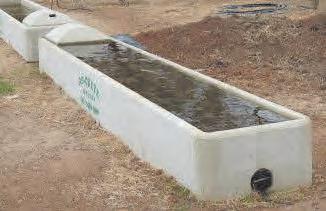





































“ That's when you know you've hit the jackpot, when you know they're walking while you're in bed.”
– Ally Arnold, Lilydale, Tasmania
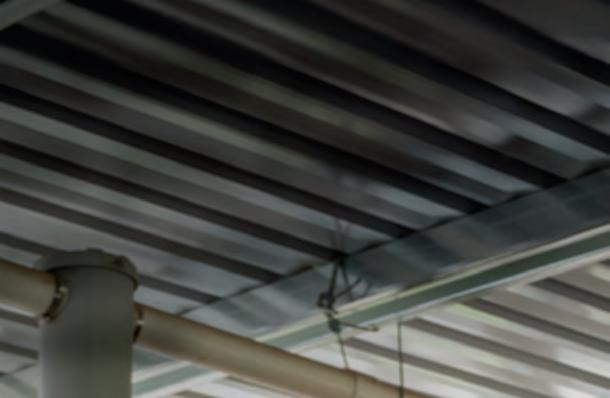

Did you know that in many cases, there is no need to build a new shed when installing milking robots? Interest in retrofitting has increased in recent years and for good reason! Ally and Robert Arnold are a perfect example of this. “So, we’ve converted the herringbone into this robotic dairy, and the biggest advantage was the saving of using the current infrastructure.” – Ally Arnold
Scan the QR-code and hear from Robert and Ally how their cows started to walk themselves in just 2 weeks.
Bright farming is yours by choice Scan me
GRO RURAL and Dairy Australia have joined forces through a 12-month sponsorship to boost access and connectivity between farmers, stakeholders, and dairy industry service providers across Australia through the GRO Rural platform.
This groundbreaking collaboration will utilise the Dairy Registry on the GRO Rural platform to enhance connections across the dairy industry, driving advancements in industry access and support.
The sponsorship will support Dairy Australia and GRO Rural in their shared ambition of supporting a profitable and sustainable dairy industry by facilitating strong connections between farmers and service providers, improving access to services that benefit and advance dairy farm businesses and the industry.
GRO Rural founder Dimity Smith commented on the significance of the collaboration.
“We are excited to team up with Dairy
Australia to enhance accessibility for dairy farmers and service providers across Australia,” she said.
“Integrating the Dairy Registry into our platform is a pivotal step towards bridging gaps within the industry, aligning with Dairy Australia’s vision for a more connected and effective sector.”
Dairy Australia Farm Engagement practice lead Isabel Gardner commended the impact of the sponsorship.
“Our collaboration with GRO Rural is a significant leap forward in enhancing industry connectivity,” she said.
“This initiative will strengthen industry relationships and improve farmers’ access to vital resources, including agronomists, veterinarians, and legal professionals with dairy expertise, underpinning our shared goal of a profitable and sustainable Australian dairy industry.”
This 12-month sponsorship is poised to drive significant improvements within the dairy

industry, enhancing connectivity and access to crucial services.
By addressing the needs of dairy

Pac Cool Dealer - Australia
The Tasmanian Institute of Agriculture will undertake a three-year research program to boost sustainability and profitability for Tasmanian farmers through the efficient use of irrigation.
The project, Growing value from irrigation for Tasmanian agriculture, received $1.6 million through the Tasmanian Government’s Agricultural Innovation Fund and was announced in August this year.
TIA’s agricultural systems centre leader and TAS Farm Innovation Hub deputy director Professor Caroline Mohammed said the project aimed to build sustainable and climate resilient irrigation farming systems in Tasmania.
“In collaboration with the government, industry, and farmers, we will assess the economic value already derived from Tasmania’s irrigation schemes and identify opportunities for future growth,” Prof Mohammed said.
“This will help to guide future investment in irrigation and support farmers to make decisions around land use change.
“Our research program is examining the current use of centre pivot irrigators to evaluate irrigation performance and support improvements to on-farm practices.
Packo & Pac Cool Spare Parts PACKO has a new

THE DEDICATED MILK
- A milk vat to suit all herd sizes, pick up schedules & entry temperatures
- Cooling & wash controls - user friendly, simple & effective
- Glycol chiller cooling & traditional direct expansion cooling systems
- New & secondhand sales, spare parts & wash system upgrades for all makes
Call Dairy-Tech Refrigeration today for a no hassle quotation
PHONE: 03 5662 3277 EMAIL: pgoiris@dairytechrefrig.com.au
WEB: www.dairytechrefrig.com.au Refrigerant Trading Licence - AU34439
professionals, the collaboration supports Dairy Australia’s goals and promotes sustainable growth within the sector.
“Over the longer-term, this could result in benefits including reduced water logging, reduction of crop losses and improved soil health.”
As part of the project, TIA will host on-farm demonstration trials around the state to share regionally relevant strategies and tools to help growers optimise irrigation efficiency, sustainably manage soils and increase farm profits.
Prof Mohammed said this research program would link to, and work closely with the TAS Farm Innovation Hub’s statewide Efficient Water Use program to support Tasmanian primary producers to build confidence and skills in their on-farm water management.
“Producers around Tasmania have identified priority needs and preferences for training which includes stock water infrastructure design, pre-season irrigation maintenance and performance checks, and financial modelling and investment decision-making for irrigation development,” Prof Mohammed said.
Between these two programs, Tasmanian farmers will have access to information and resources to help them strengthen their business, climate resilience and sustainability for the future.








We understand that overall lifetime productivity of dairy cows impacts your profits and the planet. That’s why we developed Hy-D®. It provides rapid access to the vitamin D3 your herd needs for peak health and performance.
Now you can say YES to:
Yield increase of milk

Enhanced calcium and phosphorous metabolism
Strengthen immunity
So that you can turn possibility into profitability.
For more information, please contact our team at 1800 029 920
Learn more at dsm-firmenich.com/anh
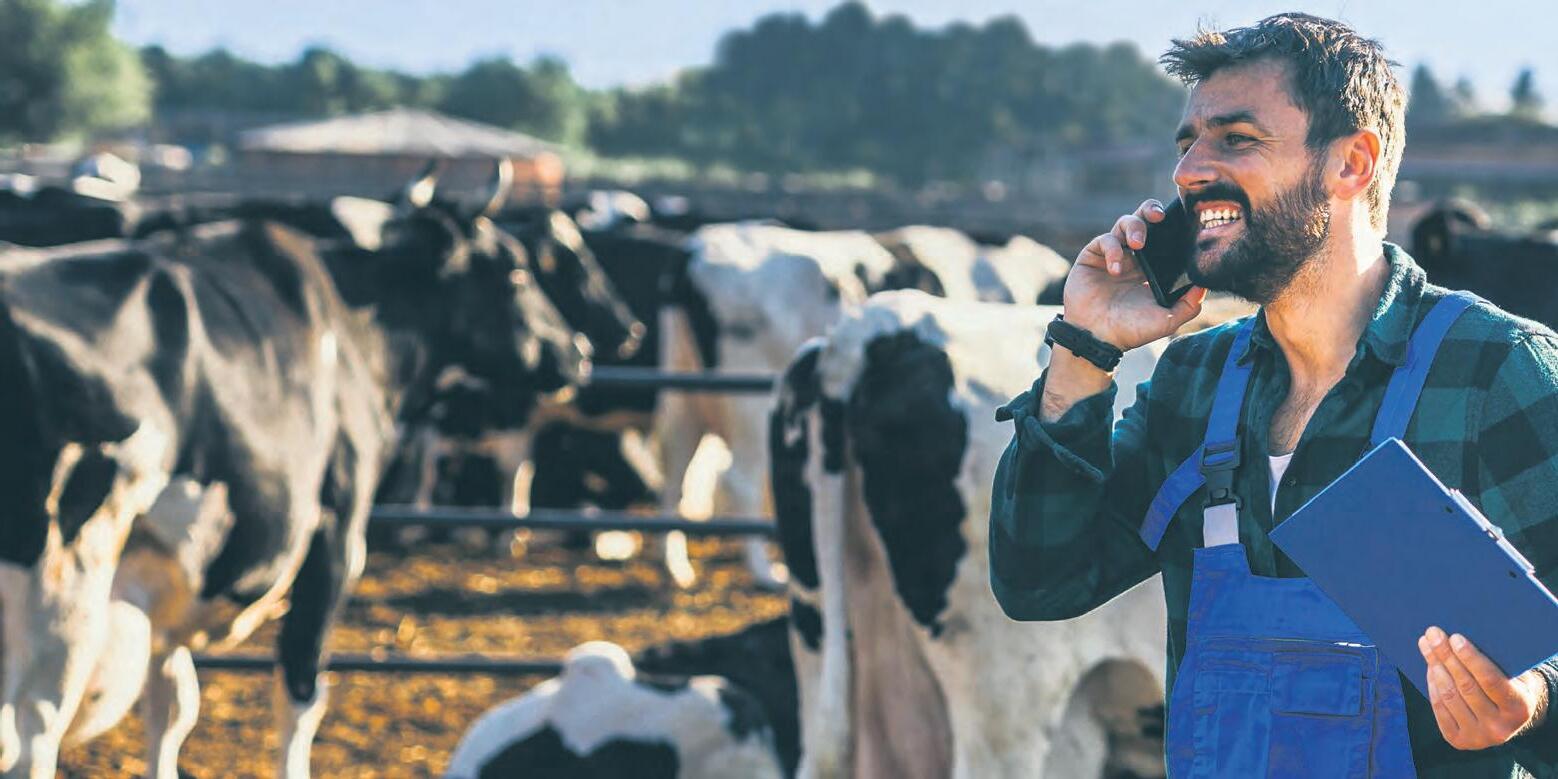


In dairy farming, the wellbeing of each cow holds the key to unlocking the full potential of the herd. Behind every high yielding dairy cow lies a delicate balance between health and productivity. There are many factors that impact the cow’s physical well-being, shaping not only their individual performance but also the overall efficiency and profitability of the operation.
Vitamin D's impact in the health of ruminants has gained relevance in the recent years, as well as in many other species. For ruminants, two clear areas of the impact of vitamin D in health are Ca/P Metabolism and Immunity.
Both major known areas of impact of vitamin D – calcium and phosphorous metabolism and immunity - play an especially vital role on the health of the animals. Consequently, the energy balance results in the greater milk production capacity and healthier cows. One of the main reasons health is critical for optimal milk production is the expense associated with activating the immune system of animals. Inflammation is a natural process, defending against pathogens that may impact health negatively. However, inflammation that is excessive in magnitude and length of time does result in harm to the animal (Brewer et al., 2020).
The two common ways of absorbing vitamin D are via the sun, or through feed, commonly as vitamin D3. However, there is a major limitation as to how much a cow can transform into 25-OH vitamin D3, which is later converted in the kidney into 1,25OHD3, the active form.
Supplementing with products such as Hy-D® supports the cow in the metabolism of vitamin D3. It bypasses the critical first step of hydroxylation in the liver and reaches the blood stream quickly and efficiently. The key advantage of Hy-D® as a vitamin D source is that it bypasses the liver’s bottleneck and ensures the animal can reach blood levels associated with optimal immune function (Nelson et al., 2010).
Hy-D® does not replace the normal vitamin D supplementation but complement vitamin D3 in the diet to enable the cow to produce optimally, by way of a better immune response and optimal calcium and phosporous metabolism. Hy-D® also plays an important role in magnesium absorption in ruminant animals. In a 2023 study by Holub et al, it showed that Hy-D® improved ECM in a high producing herd by 1.7kg per day.
References:
• Brewer, A., Cormican, P., Lim, J.J., Chapwanya, A., O’Farrelly, C. and Meade, K.G., 2020. Qualitative and quantitative differences in endometrial inflammatory gene expression precede the development of bovine uterine disease. Scientific reports, 10(1), p.18275.
• Nelson, C.D., Reinhardt, T.A., Thacker, T.C., Beitz, D.C. and Lippolis, J.D., 2010. Modulation of the bovine innate immune response by production of 1α, 25-dihydroxyvitamin D3 in bovine monocytes. Journal of dairy science, 93(3), pp.1041-1049.
• Holub, G.A., Chapman, J.D., Zanzalari, K.P., Gott, P.N., Craig, B.M., Dann, H.M. 2023 Journal of Animal Science, Vol 101Suppl 3, pp 632-633
BY JEANETTE SEVERS
UP TO 95 per cent of Australia’s dairy herds could have been exposed to pestivirus, including those in mainland states and Tasmanian herds.
Pestivirus causes abortion in cows, ill-thrift, pinkeye, diarrhoea and respiratory diseases, including pneumonia.
As a result of infection in early foetal life, those calves that survive become lifelong carriers of the virus.
The virus is shed by these calves in all body secretions – saliva, tears, nasal discharges, milk, urine, semen and dung.
It is very contagious, and is spread by direct contact with the carrier animal or its secretions.
The effect on the dairy business due to pestivirus includes early foetal abortions by 40-50 per cent of female cattle across the herd.
New Zealand research into heifers affected by pestivirus indicates they produced 48 per cent less milk volume, with 48 per cent less fat and 49 per cent less protein in the vat.
After recent outbreaks of pestivirus were identified in dairy herds in Gippsland and northern Victoria, Hico hosted a workshop with dairy farmers, veterinarians and industry service providers, to raise awareness of the extent of the problem.
“We’re seeing it widespread in dairy and beef herds, and we’re seeing it in northern and southern Australia,” said David Dunlop, artificial breeding and semen sales manager for Hico Australia.
Some farmers at the Gippsland workshop on August 6 detailed their experiences realising they had pestivirus in their herds for the first time.
Every farmer’s story was similar, with pestivirus occurring some months after the purchase of new cows that were in-calf. That included cows purchased from reputable herds.
The impact on their production systems occurred after calving and weaning. Some
calves remained strong, others were weak in the paddock, showing symptoms of respiratory disease.
Deaths among the calves led to tests, although pestivirus was not part of the initial testing regime. Eventually, each farm received notice of positive tests for pestivirus antibodies.
Evan Campbell and Kellie Price, from Yannathan, had a closed herd until they purchased cows from a reputable breeder.
“The calves were weaned and went to the outblock in very good condition last year,” Evan said.
The heifers on this block are monitored daily.
“Two months later, on a really hot day, five heifers died,” Evan said.
“Our vet did post-mortems and we tested the water in the dams that the heifer herd had been drinking from.
“The vet found some abdominal scarring during the post-mortems, caused by bovine viral diarrhoea virus (BVDV).”
BVDV is commonly known as pestivirus.
“Histology showed pestivirus antibodies in some of the heifers,” Evan said.
He followed up with a bulk milk test which indicated pestivirus in the herd.
“So we ear notched all the calves and the milking herd and identified one cow and two calves that were PI animals,” Evan said.
“We contacted the breeder we bought the cow from and they admitted they had a history of pestivirus in their herd.”
Evan and Kellie, with advice from their vet, are now bulk testing the milk in the vat a couple of times a year
“I’m confident in bulk milk testing,” Evan said.
“It would be good if all dairy herds were tested through a bulk milk test, to determine the extent of the problem.”
Herd fertility has also improved.
Pestivirus creates a mass immunosuppressive event in the herd. The critical effect is caused by an animal that is called a persistently infected (PI) animal.



Australian research has indicated within a herd or group of animals in which there has been recent virus spread, the incidence of PI cattle can range from 1-50 per cent.
Dr Rob Bonanno, of ProDairy, is a veterinarian with decades of experience working with dairy herds.
“I can count on one hand the number of herds we’ve tested that haven’t been genuinely exposed to pestivirus,” he said.
“In the past 12 months, we’ve done more than 100 bulk milk tests in Victoria and Tasmania.
“We’ve found exposure everywhere we’ve looked.
“Results have ranged from really high exposure with PIs in the herd, to low sporadic exposure with no PIs present.
“It’s a widely spread disease that hides in plain sight.
“I’ve known farmers who’ve bought extremely good looking, well-bred animals, that have been PIs.
“The few herds that have managed to avoid exposure – exposure at the wrong time on that farm could result in a catastrophic outbreak of embryonic loss, PI-born calves, every calf in the calf shed infected with salmonella, pinkeye, pneumonia or other respiratory bugs.”
Rob said he had seen positive test results in calves and in four-year-old milking cows, disputing the widely held belief among farmers that PI cattle are scrawny, under-developed and die within days of being born.
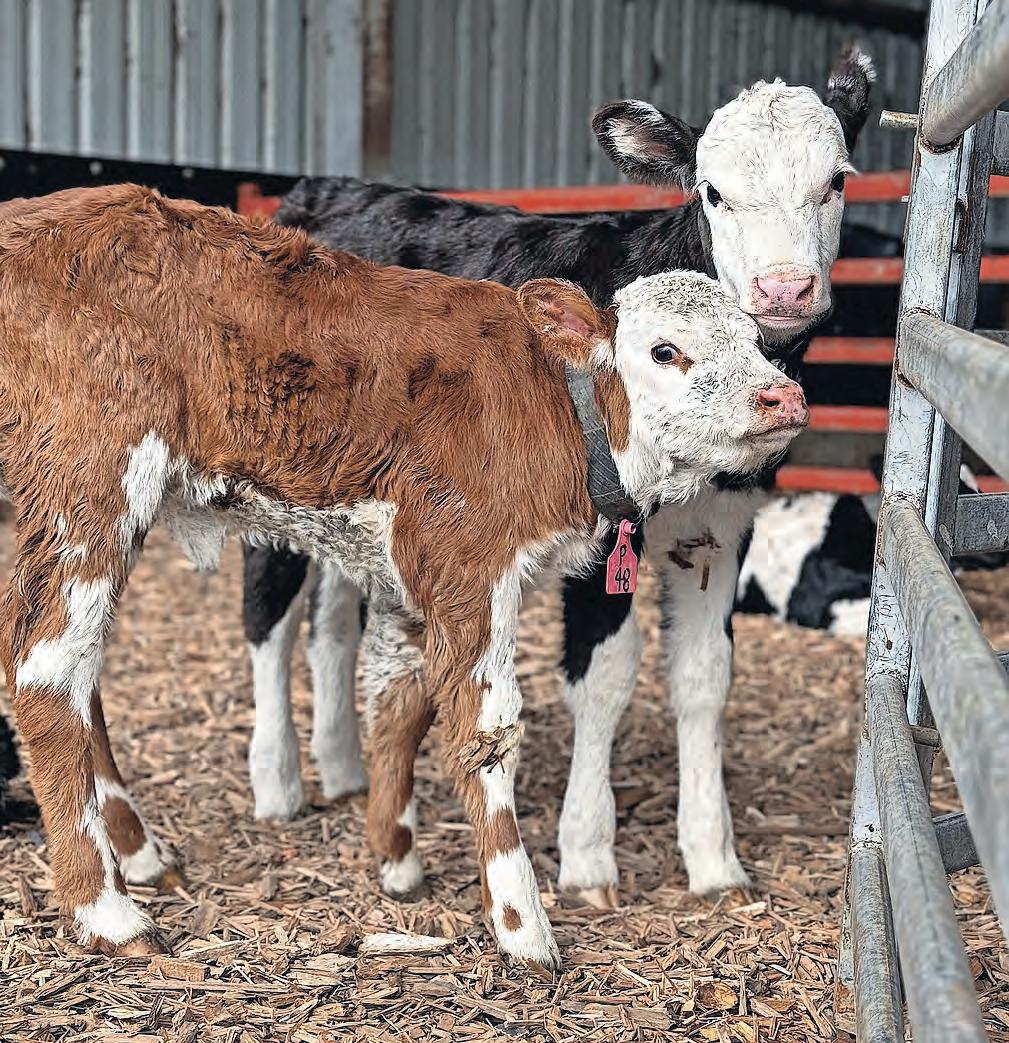
He said the animal that gets pestivirus in the womb will shed millions of pathogens in its lifetime. Other cattle contract pestivirus simply by being in the same space as a PI.
“Outblocks are a disaster for pestivirus,” Rob said.
“You often don’t know if cattle or a bull from next door get in with your heifers, and one of them could be a PI.
“The farmer next door might have bought PI cattle and put them in the paddock next to your in-calf heifers, and the first time you know you have a problem is when your calving rate is low.
“Wild deer are also a carrier of pestivirus.” Rob said in-vitro infection is the biggest risk for production loss.
“If a heifer or cow gets the disease when they’re 0-40 days pregnant, the embryo is lost,” he said.
“If you’re doing a short eight week joining, that animal is six weeks in-calf and then loses that calf, so it’s a very low likelihood of her having a successful joining again.
“So you have a heap of cows that present as empties at the end of the joining period.
“And you think, she only had one mating, we didn’t see her again, she missed joining this season.”
Between five to 15 per cent of pregnancies are lost in the embryonic stage in an given year.
But the immunosuppressive flow-on status effect of pestivirus accelerates this risk, as it does with infections.
“But if a cow is between 40 and 125 days pregnancy, if it gets infected with pestivirus, that little foetus doesn’t have an immune system. And this is where the virus is cool,”
Rob said.
“The calf’s immune system never recognises pestivirus as something that doesn’t belong to it.
“So these calves never create an immune response to pestivirus and they are what we call PIs.
“And PIs spread pestivirus. For as long as they live, PIs will shed pestivirus, because their immune system recognises that as normal.
“So those PIs infect all the calves in the shed.
“When they are running with the heifer mob, those PIs infect all the heifers.
“If they get across the fence into the neighbours place, they’ll infect the neighbour’s cattle.”
If that herd shares a fenceline with other cattle, the infection will spread between animals.
Eradication of the virus within Australia’s dairy herds still puts them at risk, because the nation’s beef herds also carry PIs.
But eradication programs overseas have significantly reduced the impact of pestivirus.
A testing and eradication program in Swiss herds, including culling PIs, saw the prevalence of newborn calves born with pestivirus infection reduce to under 0.2 per cent.
Recent research in Ireland concluded the annual benefits of eradication of pestivirus from dairy herds benefited production by a factor of 14.
FIL animal marking products offer solutions for identifying and separating animals. Tried, tested and proven, FIL animal markers are market leaders in reliability, visibility and ease of application. Most commonly used for:
• Colostrum management
• Treatment identification
• Heat detection




A six year eradication program was estimated to cost 40 per cent less than the annual production loss across the Irish dairy industry.
Meat and Livestock Australia has identified pestivirus as the second highest economic impact disease affecting cattle – with an annual estimated cost of $114.5 million.
The MLA report recommends prevention by culling PI animals and herd vaccination.

In Australia, Zoetis produces the only available vaccine for cattle, called Pestigard.
At Beef 24, Zoetis launched an online calculator for beef and dairy farmers to identify the loss of production in their herd if it is affected by pestivirus, compared to the cost of annual vaccinations.
More on page 20.

BY JEANETTE SEVERS
A COMBINATION of testing, monitoring and vaccination is recommended for managing pestivirus.
That is the message from a workshop in Warragul recently, attended by dairy farmers, veterinarians and industry service providers.
A bulk milk test is used to identify if pestivirus has infected cows in the milking herd.
Veterinarian with ProDairy, Dr Rob Bonanno, recommends several ways of testing for pestivirus.
“Screen the herd by doing a bulk milk test,” he said.
“This measures the level of antibodies in the milk. From this, we know if the herd has had a low, moderate or high exposure to pestivirus.”
Rob said he would recommend only vaccinating the herd for a low exposure result.
“That herd is susceptible to an outbreak of pestivirus when the cows are pregnant, and that would be a disaster,” he said.
“I would recommend vaccinating about a month before joining begins. That would provide optimal protection for calves in utero.”
Heifers and cows that contract pestivirus while their foetus is 0-40 days old will often abort.
“If your herd’s exposure is low or none, I would recommend vaccinate every year,” Rob said.
“The smart manager has vaccination as part of their risk management plan.”
A medium or high exposure result in the milk test needed different treatment.
“A medium level of infection may be that all the old cows are immune and the young ones aren’t, or all the young ones are immune but the old cows aren’t,” he said.
“Or there’s a spattering of immunity throughout the herd.”
Rob recommends testing cohorts.
“I would test half a dozen heifers, half a dozen young cows, and half a dozen mature cows,” he said.
“That should identify if it’s one cohort or a mix of ages.
“If it’s the young animals, I would suggest a recent outbreak. If it’s the old cows, it could be the infection occurred years ago and the young animals are susceptible.”
Rob said high levels in the milk test indicates the exposure has been long term.
“So we wouldn’t necessarily vaccinate the herd, but we would monitor young cattle coming through,” he said.
“We would also test the herd to make sure
there are no PIs. The PIs would be creating new infection in the herd, all the time.
“We would also vaccinate young animals as soon as they enter the herd.”
PIs are persistently infected animals that would have contracted pestivirus in utero, before their immune system identified the disease as alien.
The calf is then born contagious, and pathogens are shed continually because that calf’s immune system treats the disease as part of its normal state.
Ear notching heifers is a histology test that measures their level of exposure.
“If you’ve had a group of heifers running together, we only need to test about six to eight of them,” Rob said.
“If that sample size is immune, we know the probability is the whole group is immune.
“If none of them are immune, we known the probability is none of them are immune.
“If some of them are positive, there’s probably an historic infection, and there’s some other tests we can do which are more quantitative and can tell us if there’s been a recent infection of historic exposure.”
Buying bulls increases the risk of spreading pestivirus, as the disease is spread animal to animal from all mucosal production, including semen.
“If you bring in a bull and he’s a PI, he’ll infect the herd,” Rob said.
“So every bull should have an ear notch and be tested for pestivirus.
“Then he should be vaccinated, so he can’t infect the herd.”
Research indicates the contact time between a PI and other animals in the herd can be as little as one hour for transmission of infection.
Rob said bulk milk testing across the dairy industry would be a strong lever for eradicating PIs in the national herd.
Allan Murray, from IDEXX Laboratories, was one of the speakers at the Warragul workshop.
IDEXX undertakes the bulk of antibiotic testing for milk producers in Australia.
He recommends following good biosecurity practices on the farm to minimise potential contact between animals that have been brought into the herd, until test results provide a clear indicator of health status.
“The main economic impact is linked to milk yield, mortality rate and cull risk,” he said.
“There’s also a risk of other diseases because of the mass immunosuppressive effect of pestivirus – for example, mastitis increases in the milking herd.
“The risk of not testing a small sample of animals compared to needing to test the entire


Now you can cruise the farm without leaving your 4 Wheeler saddle!
The Ride Over Gate works like a springloaded cattle stop. Every farm needs at least one of these.

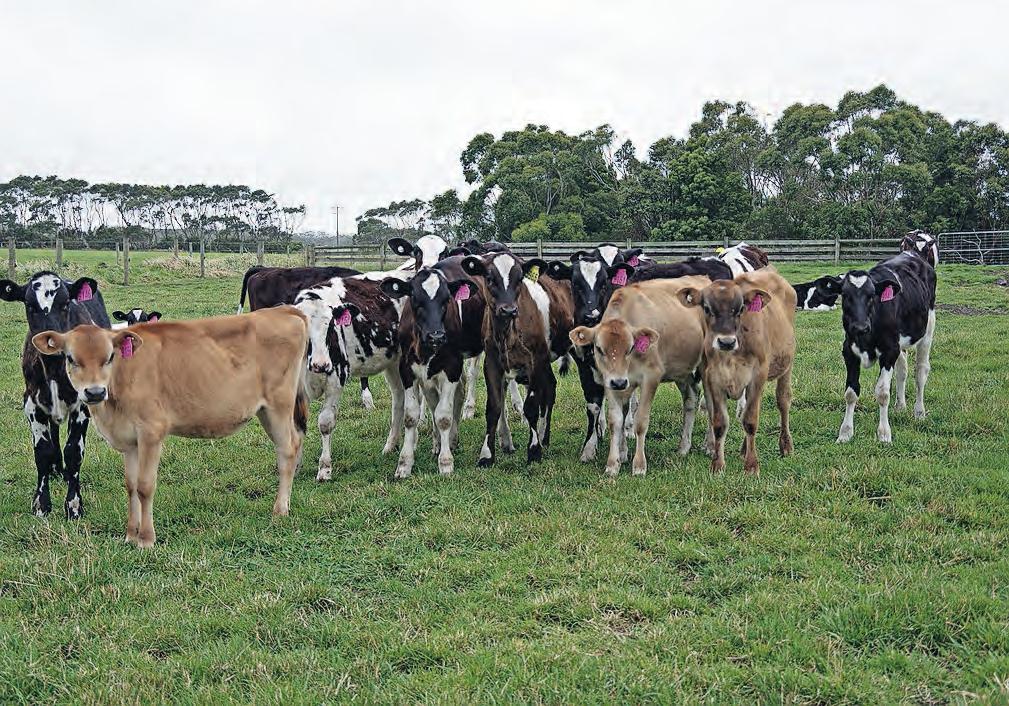

herd - there’s been an 80 per cent mortality in some herds.
“Vaccination is part of the solution and is a risk mitigator.”

We have designed a simple but very effective Feed Trough, to cut your feed wastage and save you money.

The endless troughs can be laid in a continuous length, they are also stackable, so you can move them easily from one paddock to another. The frame is made from Australian Steel, with repurposed rubber conveyor belt used to make the trough, its nylon based and will last a lifetime.
8m $1760 Inc GST • 6m $1320 Inc GST




What if you could proactively improve calf and cow health sothey can better withstandchallenges, including those caused by mycotoxins?
What if you could control calf diarrhea before an outbreak, and reduce the incidence, severity and duration of other common diseases that affectthe feedconversion efficiency of lactating cows and your bottom line?

What if you could add nutritional insurance to every stage of your cattle’s lives resulting in healthier heifer calves that join the milkingherd ready to contribute at a high level, and lactating cows that spend less time off feed.
Has been shown to:
•Agglutinates and binds E. coli and Salmonella enterica.
• Agglutinate and bind E. coli and Salmonella enterica
•Reduces the incidence, severity and duration of mastitis and cryptosporidiosis infection.
• Reduce the incidence, severity and duration of mastitis and cryptosporidiosis infection
• Reduce blood stress markers during and after transport and temperature stress.
•Reduces blood stress markers during and after transport and temperature stress.
• Minimise cytotoxic damage caused by a variety of mycotoxins and carryover of aflatoxins in milk
• Improve weight gains and performance in calves and milk yields in lactating cows
•Minimises cytotoxic damage caused by a variety of mycotoxins and carryover of aflatoxins in milk.
•Improves weight gains and performance in calves and milk yields in lactating cows.

Distributed By:

BY RICK BAYNE
LYNDA AND Peter Page sell fudge but their farm shop at Jancourt East in south-west Victoria has another important function.
The Dairylicious shop serves as a gathering point for local farmers, sometimes to share a cake, sometimes to share a worry.
“We’re the hub for the region’s dairy industry,” Lynda says.
“One of the reasons we started this shop was to make sure there’s a place to go if local farmers need to have a chat.
“Every Sunday we have a get together with a different cake and some jigsaw puzzles to work on. All the farmers come here so we hear all the news of what’s going on in the area.”
Lately that discussion has centred on the green drought, and while things are tough, local farmers appreciate the opportunity to share their experiences and concerns.
Lynda and Peter tell of a local farmer who has laid pipes to share his water with a neighbour whose dams are running dry.
“That’s what this community is like –everyone helps out,” Lynda said.
“This has become a spot for people to come to. Even people from Melbourne come back here.
“It’s important to be here for the dairy industry and reflect what it does.”
Although her work background was mostly in dress making, including wedding dresses and onesies, Lynda loved making wedding cakes as
a sideline and always dreamt of having her own confectionery shop.
She grew up on a local dairy farm and the area never left her heart, so when it came to setting up a business, Jancourt East was the perfect spot.
“We’re on the main road from Port Campbell back to Melbourne,” Peter said.
“That’s why we chose this site because we knew it would be a prime spot. There’s nothing else between Port Campbell and Colac.”
Lynda’s parents were among the original farmers allocated land in the Heytesbury Soldier Settlement, with her family moving from Healesville in 1962 to start dairy farming.
Her mother, coming up 94, is still on the family farm and is believed to be the one of the oldest of very few settler wives still living on the original family farm. Her brother is also on the farm, and his two children work in the dairy industry.
Always entrepreneurial, Lynda started her own clothes label with her sisters Sandra and Dianne as a 15-year-old.
“We went for years and had our own shop and three big sheds full of clothes on the farm,” she said.
“All of my family was creative. I loved sewing but I always wanted to be a cook and loved decorating cakes.”
Lynda has been making fudge and sweets with her mother on the farm since she was eight years old.
Peter also had a close connection to the dairy industry. He worked in rural advertising for 20 years and was part of the foundation of

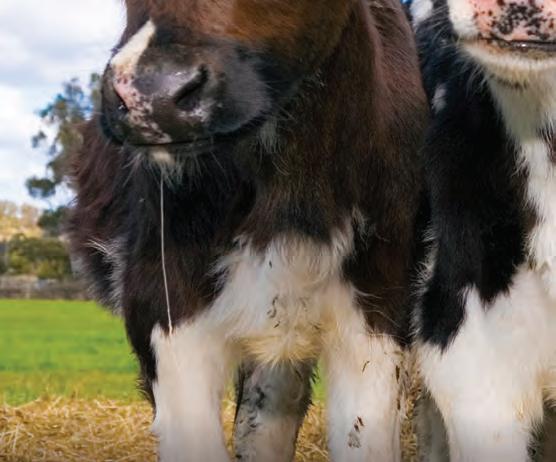

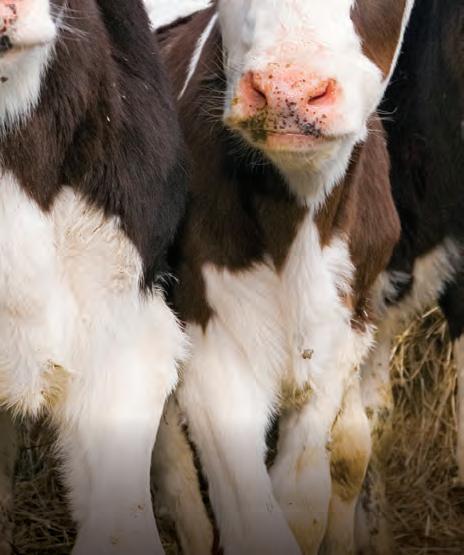

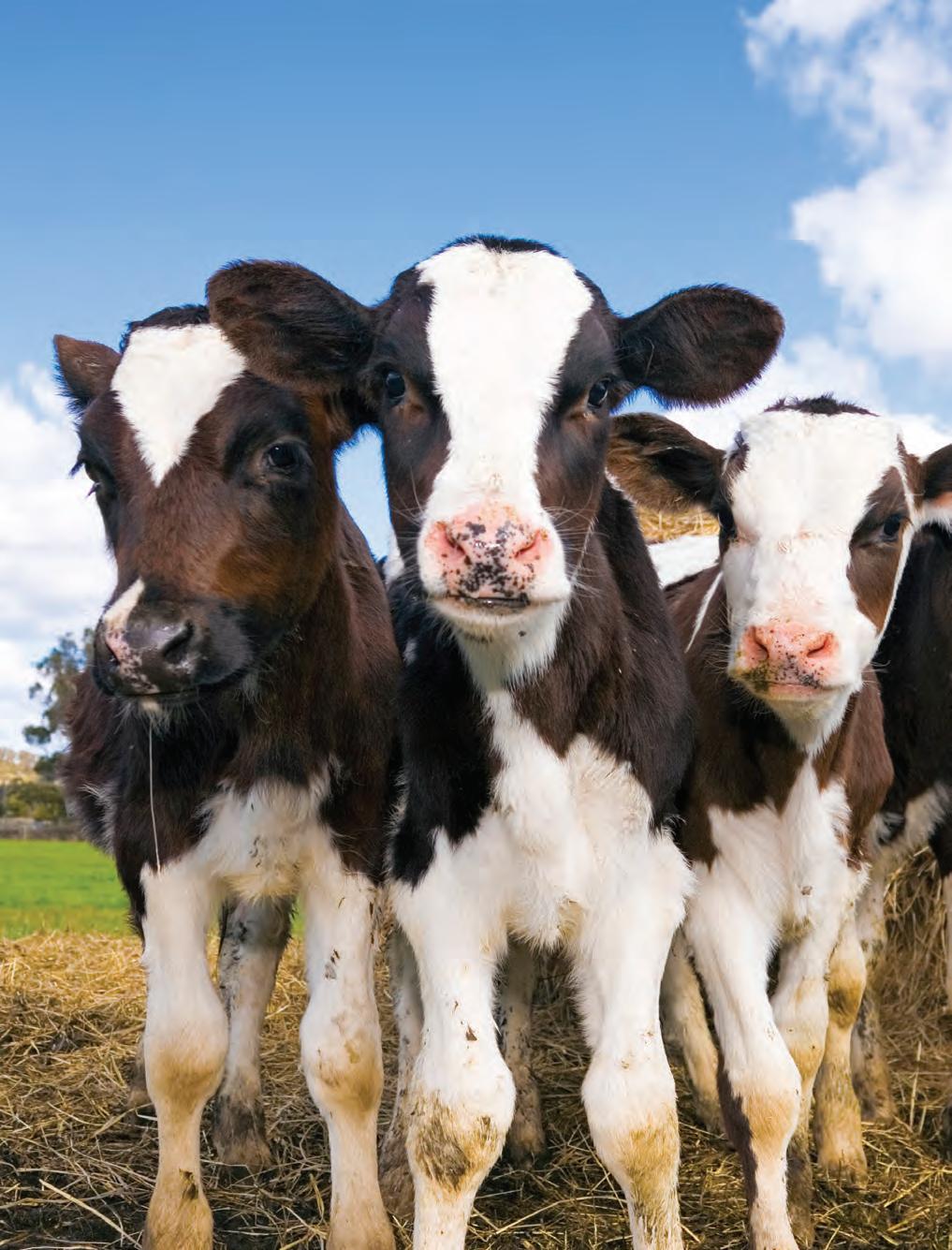


Dairy News Australia and the first advertising representative for the publication.
The couple met at a field day about 16 years ago and decided to set up business.
While Peter was renovating their new home on their four-acre block, Lynda launched a onesie business.
She eventually had to teach Peter the finer points of cutting and sewing and enlist his help as the business boomed, but she still had the urge to bake confectionery.
She started baking and selling cakes in 2015 and they designed and built the two-storey farm shop with a large upstairs function area in 2018.
Apart from sugar, all the ingredients for the fudge are sourced from local farms, including Specialised Powder Milk from Saputo, cream from AG Warehouse and milk for the coffees from Otways Pastures, which consists of three
local dairy farming families.
“Everything I use comes from Australia; I’m very conscious of that,” Lynda said.
She’s also conscious of her farming environment.
“Being one of the first Settlement kids, I want to promote the Heytesbury Settlement area and dairy farming in general, and remember the lives of the people who turned this land into a profitable area.
“It’s now a great dairy area. I saw my dad work so hard on the farm and all the ups and downs that went with farming, and I wanted to give back to the dairy area that I loved so much.”
She admits life wasn’t easy during those early days.
“Many kids had to milk before school and they’d be on the bus still smelling like cows.



The Timboon Consolidated School had to put on lunches at 11 o’clock for families that couldn’t afford them.”
But the sense of community was as strong then as it is now.
The shop is surrounded by dairy farms and Peter and Lynda have had some cattle on their four acres, but now leave the land for parking and a paddock for a neighbouring farmer to raise calves – which are a bonus attraction for international visitors.
The dairy industry also helped when it came to setting up the fudge enterprise.
“We went to dairy farmers and got old fat agitators that were in their sheds not being used anymore,” Peter said.
“We got paddles made and set up six small mixers. The key was the slow agitation that you have in a dairy vat.”
Dairylicious has fielded a lot of inquiries about potential new markets over recent months, but they’re content with their current workload.
“Over summer we’re so busy and we have some new contracts coming up, but we’re at the stage in our lives where we don’t want to go huge,” Lynda said.
Part of the reasoning for that is that Lynda likes to be hands-on with all the cooking.
“I don’t use recipes in anything. I just feel it, taste it and get the balance right,” she said.
“Real fudge is all about a balance of dairy and sugar. Most you find today are packet mixes but I want to have my own recipe – the real deal. It’s got to be creamy and smooth.”
South-west Victoria’s dairy produce has never tasted so good.








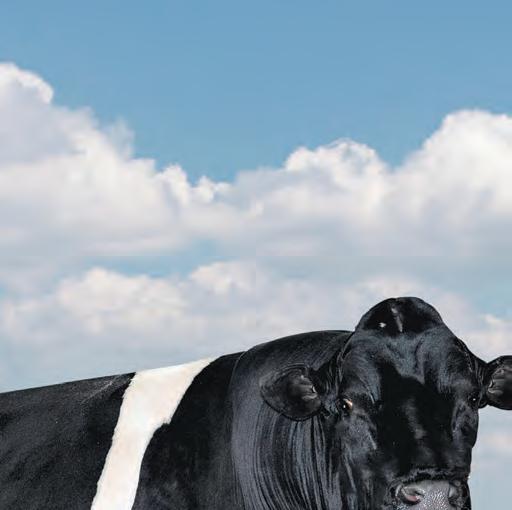


ANIMAL ENRICHMENT programs are common in zoos where they provide a creative outlet for physical activity and mental exercise, but they could also perform an important function on dairy farms.
Rhiannon Cox is in the fourth year of a Bachelor of Agricultural Science with Honours at the University of Tasmania, which is delivered by the Tasmanian Institute of Agriculture.
She has returned to her hometown in northwest Tasmania to run a six-week trial at TIA’s Dairy Research Facility at Elliott as part of her honours research project.
“My research project is looking at the role of enrichments, or toys, in the calf shed,” Rhiannon said.
“I’m studying what types of enrichment activities the calves appear interested in and choose to interact with.
“I’m also looking at the connection with reduced stress levels and increased weight gain, which are important indicators for calves.
“Previous research has found the environment in a calf shed has a significant impact on the welfare of dairy cows and can set them up for life.
“We’re aiming to identify practical things that farmers can easily implement on their farm without spending lots of money.”
Rhiannon is running a calf enrichment trial.
She said enrichment activities that allowed animals to display biologically relevant behaviours (like suckling) appeared to be more beneficial than objects that did not serve any real purpose, such as a bouncy ball.
“You see children playing with toys all the time as a way of emulating behaviours and animals aren’t so different,” Rhiannon said.
“The calves have instincts they want to practice and learn, and you see this when they suckle and chew on everything.
“Calves will often suckle on fixtures in the calf pen, bedding or other animals and this can lead to health problems.
“The introduction of enrichment activities can safely redirect behaviour and will hopefully lead to animals that are less stressed and more productive later in life.
“Hopefully they’ll be tired after playing with the enrichment toys and will go for a nap, instead of becoming bored and going to nibble on their friend’s ear or something that is not safe.”
Rhiannon has set up cameras near the calf pens to record video footage and see how the calves interact with the toys while humans are not around.
The three toys being assessed in this trial are balls filled with hay, bouncy balls and an object called a teething star.
She said happier and healthier calves were an important issue for farmers and consumers alike.
“It’s not just people who buy a steak or buy the milk off the shelves that want the cows to be happy,” Rhiannon said.
“Farmers and other people that work with the cows want them to be happy.
“They bond with the animals, and I know farmers that will pause to give their cows a
time.”
COST EFFECTIVENESS was a big factor in Ben Maile’s decision to install the CowManager system in his 700-plus cow dairy herd at Weegena on Tasmania’s north-west coast.
Originally from Sussex in the United Kingdom, Ben and Kristy and their two youngsters are now in their fifth season contract milking for Dornauf Dairies. They operate the farm with two staff – Ben’s second-in-charge and a farmhand.
Since installing CowManager 18 months ago, Ben estimates early detection of health issues has been one of the standout benefits of the system.
“CowManager detects health issues before they become critical and we can pull cows out before they go downhill,” he said.
“We saved more than a dozen cows with displaced abomasum or potential pneumonia in the first year.”
He estimates that if CowManager detected just five or six cows with emerging health issues every year, it would well and truly cover the cost of the annual subscription.
His vet also uses the CowManager system to track the cows’ eating habits and detect any crashes that point to a potential health concern.
“Once the CowManager ear sensors are installed, we pay an annual subscription which covers maintenance of the system and the replacement of any ear sensors that stop working,” Ben said.
“There is no outlay for replacing equipment five to 10 years down the track, the system has a lifetime warranty on malfunction gear.”
Ben sees CowManager as another pair of eyes for heat detection. They still use stickers for visual observation of heats.
“We’re calving 700 cows in two months. We need to optimise fertility and quickly identify non-cycling cows within a very short timeframe, so every method of heat detection has value,” he said.
With a current empty rate of less than seven per cent, Ben estimates there has been a small improvement there.
The big improvement came with more early pregnant cows and the accuracy of heat detection using CowManager, which is significant in a herd of this size.
“More cows in calf in the first cycle means more days in milk, which again is another way we are seeing value for money in the system,” Ben said.
They run both the CowManager fertility module and the health module in the herd, which is made up largely of New Zealand LIC Friesians that average 580kg MS and are well suited to the hilly terrain of the farm.
“For us it’s about improving the efficiency and effectiveness of our dairy production system. We only need to milk four more cows a year to cover the cost of the annual subscription,” Ben said.
Additional benefits in having the CowManager system include the ability to monitor individual cows remotely. Ben and Kristy live off-farm, a few kilometres away, so the ability to check the cows gives them peace of mind and alerts them to cows that need to be followed up the next day.
Ben is also planning to use the fertility insights for cycling and non-cycling cows to compact the calving timeframe.
“We are also looking at the data the system produces to understand better and to compare the algorithm with what we observe is happening to the cow. This should enable us to continue to refine our system and improve efficiencies.”
Based on performance to date, Ben estimates the system will have paid for itself within five
years through preventative milk loss.
“After five years, we will pay the subscription only, we don’t have to buy new equipment, it’s all covered under the lifetime warranty CowManager offer with the ear sensors that stop working, which are replaced free of charge,” he said.
“I reckon it’s one of the best, most cost effective and effective systems available.”


From 16-21 February 2025, LIC Australia is offering the opportunity to a select group of farmers to visit various dairy systems, LIC facilities and their Innovation Farm. Don’t miss your chance to explore different farming operations and gain valuable insights while networking with fellow participants.
Please note that there will be limited places and the tour will only proceed with enough interest. Reserve your spot now with your local District Manager or send your expression of interest to LIC Australia:

BY SOPHIE BALDWIN
TONGALA’S ANGUS Fraser is looking forward to heading to Melbourne at the end of September to take part in the National Dairy Cattle Young Judges Championship finals at the Melbourne Royal Show.
Angus, 20, describes his love of cows as something that came out of the blue considering he grew up in northern Queensland and his parents are teachers — although they both did come from farming backgrounds.
He said taking part in some youth dairy events when he was young ignited his passion.
“When I was 14 I came down to International Dairy Week to show cows and I developed some contacts through that,” Angus said.
And then at 16 he left home to follow his dairy farming dream.
He said looking back now it was a pretty big deal, but at the time he didn’t think much of it.
“It does sound pretty scary that I had the courage to move, but I have made it work for me,” he said.
Currently employed at Gordon Pastoral at Tongala, Angus is working as a dairy hand doing a little bit of everything.
“I like dairying and all the variety that comes with it — it’s all I have thought about for the last seven years,” he said.
“There is so much more dairying opportunity here in northern Victoria and there is a lot of energy and appeal in this region.”
Angus runs a small stud of his own — Montrose Cattle Company — and he has 20 stud cows, all Holstein except for one Jersey.
“I get a lot of joy out of showing my Holsteins,” he said.
“On a global scale they are at the cutting edge of technology and Jerseys aren’t quite as prevalent, but if I was miking a herd of cows of my own, the majority would be Jersey.”
Angus said the goal since he left school was to one day own his own farm, acknowledging that will not be an easy feat.
“Long term I will keep growing my herd and hopefully move into a sharefarming role,” he said.
“I think that is the most viable way in a capital-heavy industry, but right now it is all about continuing to work, learn and build up my skills.
“Dairying is a wonderful way to spend my life and eventually raise a family.”
Angus said this was the second time he had qualified for the judging competition.
“I qualified last year but had a three-month internship in Canada and I was unable to

attend,” he said.
The time in Canada was spent working on a farm and following the show schedule.
“The dairy industry has certainly opened a lot of doors for me and there has been some global opportunity come with that, along with Australian opportunities through events like dairy week and the Gardiner Foundation,” Angus said.
“I don’t have too many expectations when it comes to Melbourne, I just hope to do well and get some experience on the microphone.
“It’s an honour to represent Victoria.”
Agricultural Shows Australia executive officer Katie Stanley said the competition was designed to recognise the best new talent in livestock judging nationwide.
"It's an extremely prestigious event and positions at the nationals are keenly contested," Katie said.
"These young judges are the future of agricultural show competitions.
“The national competition is a coveted opportunity to grow personally and professionally by practising skills against the cream of the crop."
The winner of the dairy cattle young judges

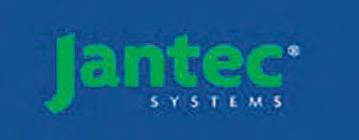

is determined by who can accurately place the animals from first to fourth, according to form and characteristics, justifying their assessment. Qualification is via success in competitive


regional and state competitions and the national competition is held in a different location each year.
Read about the other finalists on page 27.


Other National Dairy Cattle Young Judges Championship contenders are:
Patrick English, 19, Malanda, Queensland
Patrick has lived all his life on a dairy farm and is following in the steps of his family which has exhibited Illawarra cows at the local show for 108 consecutive years.
More recently they have moved into Jersey and Holsteins.
Patrick has qualified for the judging in Melbourne and also the parading which will be held in Adelaide in 2025.
“It is a pretty big honour to be representing Queensland and it is the highlight of my dairy career so far,” he said.
“I grew up showing cows as a little kid and still love it.”
Bridget Liebelt, 25,Meadows, South Australia
Bridget started her own stud Torlea Holsteins and Ayrshires in 2014.
She has more than 50 animals that she breeds from and shows at the Royal Adelaide Show and International Dairy Week.
"I live and breathe dairy, having been raised on my parents’ dairy farm in Meadows, SA, in the Adelaide Hills," Bridget said.
"I started showing dairy cattle at eight years of age and was instantly hooked.
"I believe being a great judge of dairy

cattle is crucial to making better breeding decisions to breed cows that are profitable and long-lasting, it also enhances your showmanship and fitting skills.
“Plus, it can create so many opportunities including travel and make long lasting friendships with people who share the same passion."
William Dudfield, 26, Burnie, Tasmania
William represented Tasmania at the 2023 national finals, coming runner-up.
“I’ve been showing since I was three years old and I’ve been a part of the



paraders since I was nine,” he said.
“I really enjoy the competitive side of it and it's hard to go past coming second at nationals at the Sydney Royal Easter Show last year.
“I'm from a dairy farm and although I'm in civil construction now, it's something I'll always enjoy.”
Macs Rubain, 19, Camden, NSW
"Growing up on a property and having previous experience in the beef industry, I
started working on a dairy farm after helping a local stud at the Sydney Royal Easter Show a few years ago," Macs said.
"I quickly found a passion for the dairy industry and began competing in junior judging at local qualifiers.
“I was lucky enough to win the state final and compete at the national finals in Launceston.
“Although I was unsuccessful in winning, I was asked to judge some local shows in my region.
“This year, I won the state final again and look forward to competing at the national finals in Melbourne."
Zoey Morris, 17, Woodvale, Western Australia
Growing up in the city, Zoey got a taste for country living on family camping trips. She discovered agriculture at high school in Year 9, and this allowed her to pursue her desire of working with animals.
"At school, my close friend introduced me to the love of dairy cows,“ Zoey said.
“I followed this passion and each year in the school holidays I have attended the WA Youth Cattle Handlers Camps where I have learnt cattle handling, parading and judging for dairy cows.”
The National Dairy Cattle Young Judges Championship will be held 10am, Saturday 28 September 2024 at the Melbourne Royal Show.
For more information, visit: agshowsaustralia.org.au/youth-in-agriculture/ national-championships


STUDENTS FROM Victorian dairy communities who plan to start their tertiary studies in 2025 are invited to apply for one of seven Gardiner Foundation tertiary scholarships.
Each scholar will receive $10,000 annually for three years to support costs associated with their studies.
The tertiary scholarships are named in recognition of services to the dairy industry by Niel Black, Shirley Harlock, Jakob Malmo, Bill Pyle and Doug Weir.
“Supporting rural Victorian students enhances the social fabric of our dairy communities,” Gardiner Foundation chief executive officer Allan Cameron said.
“We are proud to offer opportunities for students to pursue their tertiary education without the financial burdens that often affect those from the country.
“By enabling more students from dairy communities to gain skills and experiences in their chosen fields, we contribute to the creation of thriving, vibrant communities where people want to live, work and invest.”
To apply, students must start their first year of full-time on-campus tertiary study in 2025 and relocate due to study commitments.
There is no preferred field of study — past students have enrolled in courses ranging from agricultural science to nursing, medicine, engineering, journalism and commerce.
Previous scholar Hamish Smith is halfway through his Bachelor of Agriculture/Bachelor of Business at the University of New England at Armidale.
He recently took up the opportunity of a lifetime to travel with 28 fellow university students to California, Colorado, Wyoming and Texas in the United States.
“In April, I went on an agribusiness study tour through UNE,” Hamish said.
“It was my first time overseas. We visited farms, agricultural processors, water management facilities, research centres, input suppliers, training centres and entrepreneurs.”
Hamish — from St Germains, near Kyabram in northern Victoria — used his scholarship to help fund his trip and his tuition fees for the semester.
“This has made a substantial difference to me as it has allowed me to focus more closely

on my studies without worrying about needing to earn as much money to pay for my tuition fees,” he said.
“Moreover, it has allowed me to get closer to my career goals and ultimately contribute
to the Victorian dairy industry.”
Successful scholarship applicants need to demonstrate intended future contributions to the dairy industry and communities, as well as describe their community involvement and
Farming in a new country means new opportunities for Jacquelien Pol.
Jacquelien moved with her family from The Netherlands to Jancourt East three years ago, where they now milk 250 cows on a farm six times the size of their previous property.
Now with the support of a DemoDAIRY Foundation scholarship, she’s pursuing her own career in agriculture.
Jacquelien was still in secondary school when the family moved to Australia.
“I started school in Australia halfway through Year 10,” she said.
“I had meant to start earlier, but it was in lockdown, so we decided it would be best if I started face-to-face, especially because English was not my first language.”
She quickly overcame any language barrier.
“When I went to school, I spoke more English in a day than Dutch and that’s the way to learn,” she said.
“People tell you when you say things wrong and you learn pretty quickly.”

Jacquelien liked to help out on the farm in The Netherlands, mainly with milking and calf raising, and she’s now doing nine milkings a week at a neighbouring property while studying a Certificate IV in Agriculture at RIST.
The family’s south-west Victorian farm covers 190 hectares, a far cry from their 33ha property in The Netherlands.
“In The Netherlands you’re restricted by all the changing laws, and it’s expensive,” Jacquelien said.
“My brother did an internship in Australia in 2017 and came back all enthusiastic.
As a family, we considered farming somewhere else and took a trip to Australia and liked it.
My parents left the decision up to me and my brothers and we all saw that we have more opportunities here.
“How we’re farming now we couldn’t do at home. We graze 24-7 here, but in The Netherlands the cows were in the barn 24-7.”
Jacquelien is taking a gap year and plans to study either animal and vet biosciences or agriculture at La Trobe University in 2025.
She had an offer for the biosciences course this year but deferred and will now have to reapply after receiving permanent Australian residency earlier this year.
She will also consider veterinary science,
academic achievements.
Applications close at 5pm on Monday, November 25.
ɋ For more information and to apply, visit: https://www.gardinerfoundation.com.au/ts
although she says the specialisation of vet work in Australia doesn’t appeal as much as the varied nature of the profession in The Netherlands.
“When I’m on the farm, I love to do the animal side of things. I’m more into working with animals than machinery,” she said.
Jacquelien said the DemoDAIRY Foundation scholarship was giving her studies a great boost.
“Being international, there are not a lot of opportunities for scholarships, especially in agriculture,” she said.
“We reached out at the start of the year after we’d achieved permanent residency, which made it easier.”
She will receive up to $5000 a year for three years.
“It’s great because it covers my fees to study at RIST this year and I can save up for going to uni.”
ɋ For more information on the DDF or the Powell Legacy Fund, visit: https:// www.demodairy.com.au or phone DDF secretary Ian Teese on 0427 358 987 or itag@bigpond.com
DAIRY AUSTRALIA and Food Innovation Australia Limited are joining forces with leading Australian researchers to support dairy veterinarians and farmers to monitor and benchmark their animal health, antibiotic use and antimicrobial resistance.
The study, undertaken by worldclass researchers from universities in three states, will cover all eight dairy regions across Australia and aims to understand the current animal health status and antibiotic use on Australian dairy farms and identify key strategies to addressing antimicrobial resistance (AMR).
Pilot farmers will receive reports on key animal health indicators such as clinical mastitis and calf health, antibiotic and anti-inflammatory use.
Dairy veterinarians, farmers and post-graduate students can also nominate to be part of this groundbreaking research.
Dairy Australia’s Stephanie Bullen said effective antibiotics were a critical tool for dairy farmers to
maintain the health and welfare of their animals.
“AMR develops when infections no longer respond to antibiotics used to treat them,” Dr Bullen said.
“AMR can occur due to overuse of antibiotics, incorrect use of antibiotics or when one type of resistant bacteria transfers their resistance genes to another type.
“All users of antibiotics — medical professionals, patients, veterinarians and farmers — have a responsibility to use antibiotics well.
“The Australian dairy industry has committed to stewardship of antibiotics, using as little as possible and only as often as necessary, and this is reflected in the Australian Dairy Sustainability Framework.”
FIAL managing director Mirjana Prica said this study was important to the future of dairy in Australia’s food system.
“Global protein consumption has risen 40 per cent since 2000 and the demand for traditional proteins like dairy is expected to remain strong in Australia,” Dr Prica said.
“From our comprehensive Capturing the Prize report launched in October 2020, we know that growing demand for traditional proteins — such as dairy, meat and eggs — could present an additional opportunity worth $31 billion.
“Investing in this project is important with the rise of consumer interest in the origins of their food and the industry’s need to increase supply chain transparency, food safety testing and biological hazard control.”
This project will combine on-farm data from herd management software with a farm’s veterinary medicine purchase data from practice management software to generate farm reports.
The research will be underpinned by robust social science to ensure reports meet farmer and veterinarian needs.
Additionally, Dairy Australia and FIAL are funding the first specific survey on AMR in dairy cattle to understand the current levels of antimicrobial resistance to important bacteria on participants’ farms.
A new study has laid the groundwork for developing an early alert system to identify under-performing calves on automatic feeders.
The research, undertaken by Dr Sarah Legge as part of her PhD study with the Dairy Up team at University of Sydney, has found that under-performing calves could be identified from day five in the feeder system.

“The findings provide the basis to develop early alert systems for calves being reared with automatic calf feeders,” Dr Legge said.
The study found strong associations between the performance of female dairy calves at weaning and their subsequent performance as lactating animals.
A consistent weaning weight of about 80kg/head translated to higher production, especially in lactation one and two, and a longer life in the herd.
The research found up to 60kg variation in weaning weight with automated feeders, despite a very low mortality rate.
A subsequent study looking at the association between weaning weight and future yield and number of lactations in 1400 calves in a NSW dairy herd found that weaning weight was more strongly associated with survival in the herd than birth weight.
“For example, a calf with a weaning weight of 50kg had a 17 per cent likelihood of lasting three or more lactations in the herd, compared with 40 per cent for a calf with a weaning weight of 100kg,” Dr Legge said.
“Weaning weight and cumulative consumption at day five had a significant impact on total lifetime milk production.”
Further modelling investigated the effect of pre-weaning factors on removal from the herd, using a dataset from more than 14,000 animals from the same herd.
Dr Legge said birth weight, weaning weight and days in milk significantly influenced the likelihood of a cow being removed, with cows with a lighter weaning weight more likely to be removed from the herd early.
The research arose from a farmer’s observation of a relatively large, unexplained variability in the size of calves at weaning.
Despite uniform management and adherence to best practice standards, the farmer was concerned that calves with problems were not always identified early enough for intervention or prevention of issues and was unsure of the impact of this variability on lifetime productivity and profitability.
Dr Legge said the findings were an example of the huge opportunity to use data from modern technologies such as automated calf feeders to improve farm management.
“On-farm records and the automatic feeders provided a rich data set including birth dates, weights at various ages, health indicators and feed intake.” For more information, go to: https:// www.dairyup.com.au

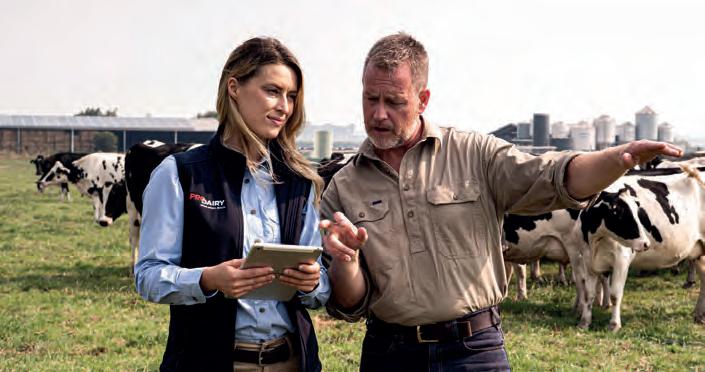

ProDairy can assist you with the development of a tailored plan:
• On-farm visit by a ProDairy veterinarian.
• Review of the current biosecurity principles, the major risks and actions taken to reduce those risks.
• Development of a customised biosecurity plan.
Visit prodairy.com.au for more information.

ONE OF the most popular tractors in John Deere’s line-up, the legendary 6M, has been given a major update for MY2025 with more speed and power across a 13-model range which, for the first time, includes four models above 200hp and a 50kph transmission.
John Deere production systems manager Stephanie Gersekowski said the update will give customers never-before-seen customisation to create the ideal mid-size utility tractor.
“The new 6M builds on its reputation as the ready-for-anything workhorse of the farm by adding more optionality, so our customers can build the tractor that perfectly matches the unique needs of their operation,” Ms Gersekowski said.
“We have taken some of the key features of our larger machines and introduced them to the mid-size tractor market, and answered the calls of those wanting extra speed for transportation with the new option of 50kph transmissions.”
One of the first changes many will notice is the updated styling. The sleek, modern refresh includes the new flag design and louver shape. The name and numbering conventions have also been aligned with the 6R, 7R, 8R and 9R tractors, which display the series separately from the rated engine horsepower.

The new 6M will be available in five frame sizes and span 13 models ranging from 95hp to 250hp to tackle anything from mowing and baling to feeding livestock. For the first time four models will be 200hp or above.
power take-off (PTO) in high-power applications or transport.
In addition, Intelligent Power Management comes standard in all machines, except for Tier 2 models (6M 140 and 6M 110), granting a 20hp boost for many typical operations that use rear
Based on customer feedback, the new 6M offers 50kph capability in the AutoQuad, CommandQuad and AutoPowr IVT Transmissions.







AutoPowr IVT has also been extended to all 6M tractors, with the exception of the 6MH and the Tier 2 models, allowing operators to change speed seamlessly from low creeper speeds to as high as 50 kilometres per hour during transport.
Other features of the new 6M include: Sloped hood design (6M 95, 6M 105 and 6M 125) for excellent visibility and maneuverability.
Availability in single or dual rear wheels, or larger tyres, for better traction and power to the ground.
Optional reversible fan technology to quickly clean radiator screens from the comfort of the cab.
Cornerpost display featuring state-of-the-art instrumentation, integrated connectivity,

New transmission makes transport speeds of up to 50kph possible.
scalable precision technology, and more.
“The redesigned 6M has everything you know and trust from this dependable all-rounder but with more power, more smarts and additional features to make it a go-to tractor for a diversity of farms including dairy and beef operations,”
Ms Gersekowski said.
Ordering for the new 6M opened on August 1. For more information, talk to your local dealer or visit: https://johndeere.com.au

AON AGQUIP 2024 has wrapped for another year, with tens of thousands of visitors passing through the gates and exhibitors receiving good interest across a range of products and services.
NSW Premier Chris Minns and NSW Agriculture Minister Tara Moriarty joined the field day celebrations on Thursday, August 22, visiting some of the more than 2500 exhibitors at the 2024 event, held at Gunnedah in NSW. They also met many attendees and enjoyed one of AgQuip’s famous steak sandwiches, cooked by Calrossy Anglican School students volunteering on the Shorthorn breeders’ stand. It's the final event on this year’s ACM Agri Events calendar, following AgSmart Connect in Tamworth in March and Elders FarmFest at Toowoomba in June.
Dates for next year’s field day events were also announced, with Elders FarmFest 2025 running from June 3 to 5 and Aon AgQuip from August 19 to 21. FarmFest is marking its 50th anniversary next year, and planning is already under way to celebrate such a significant milestone.
“It’s been another busy, but very successful field day season for our ACM Events team and we couldn’t be prouder of the outstanding outcomes for our exhibitors, and also for the industry, with our three events showcasing the latest and the best within the agriculture sector, and generating so much interest in what our producers and agribusinesses are achieving,” ACM Agri general manager Craig Chapman said.
“Our field days continue to attract big crowds and the interest of thousands of
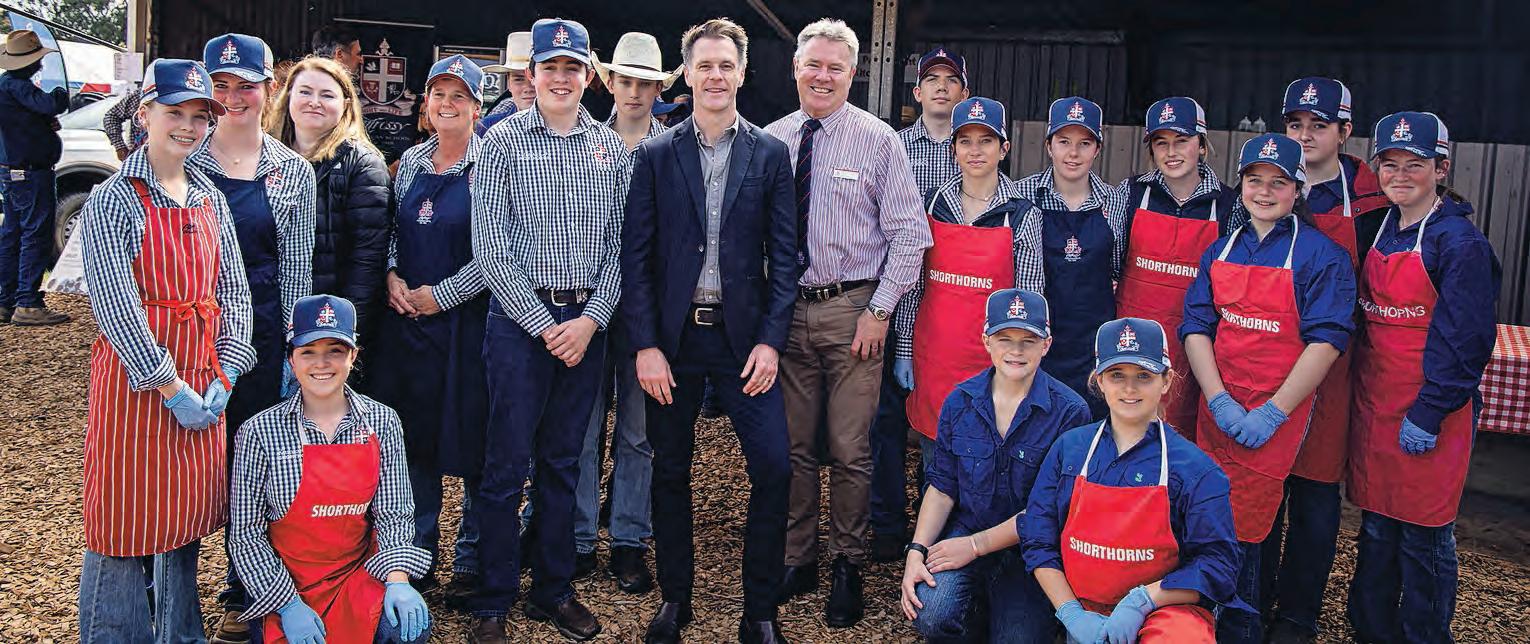
businesses from right across Australia.”
More than 50,000 visitors passed through the gates of Aon AgQuip this year, on par with previous years’ crowds.
Craig said attendance levels remained strong year-on-year, with a visitor survey this year showing more than half of attendees lived within 200km of the AgQuip site and about 15 per cent travelling from greater than 400km away to attend.
Three quarters of visitors have been to AgQuip three times or more and more than
half of attendees this year were typically at the event to make a particular purchase.
At the AgSmart Connect Hub, where ACM continues to invest in the future of farming, attendees had access to two days’ of seminar presentations from some of the nation’s leading agri-innovation experts on the likes of carbon farming, remote monitoring, telecommunications, IoT and data.
Anyone interested in seeing any of the sessions can revisit the presentations at: https://www.theland.com.au/story/8733919/
watch-live-industry-leaders-at-agsmartconnect-2025-agri-tech-event
“ACM Agri Events is committed to the ongoing growth and evolution of Australia’s thriving agriculture industry, and is so proud to be able to contribute with the staging of these important field day events, with a real focus on continued investment in the critical agri-tech sector,” Craig said.
“ACM would like to thank everyone who supported AgSmart Connect, Elders FarmFest and Aon AgQuip this year, and we hope to see you all again in 2025.”

Designed and


Featuring 3 x PTO driven rotors designed to integrate different fodder products together and give you a more even and consistent feeding. There versatile design is ideally suited for both feed pads and in field conditions. Performance and durability is built into every machine with our all steel construction, 13mm Titan series floor chains, high capacity 1200mm wide cross conveyors and heavy duty chassis. With sizes from 12m3 to 28m3 and a host of options to choose from, there’s a McIntosh Beater wagon to suit your individual needs.

































